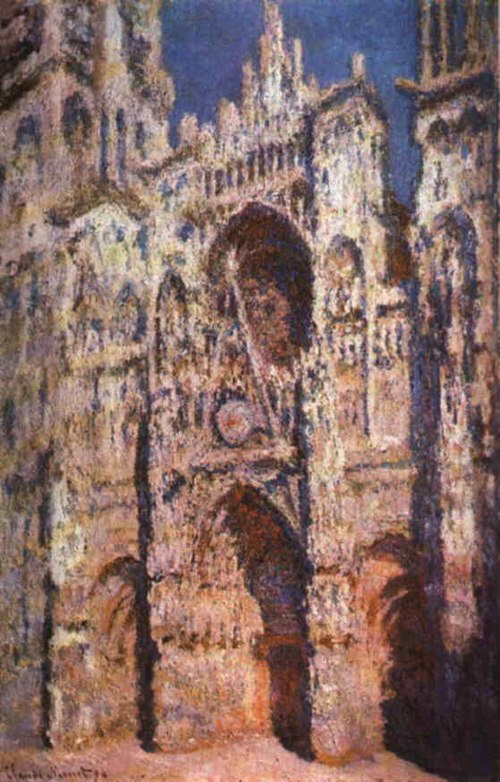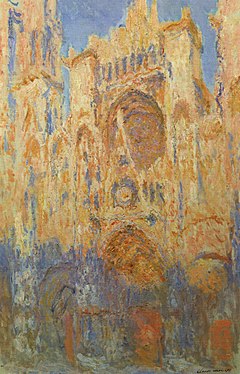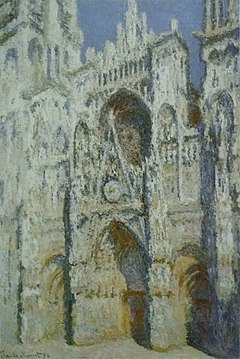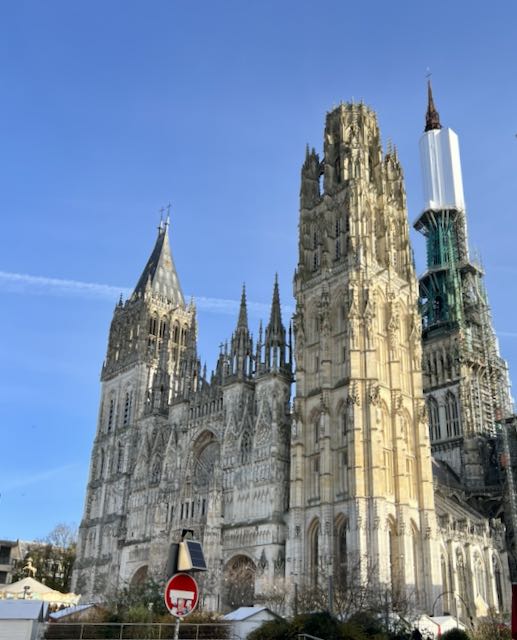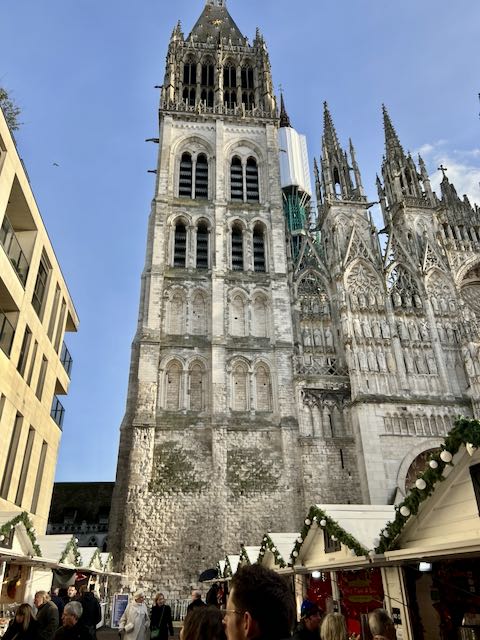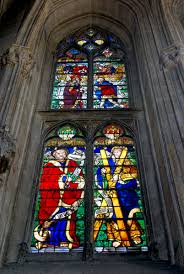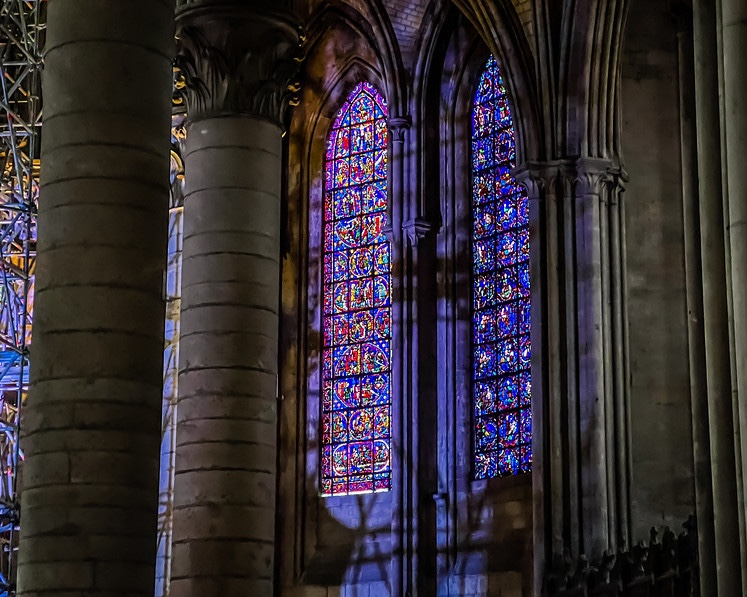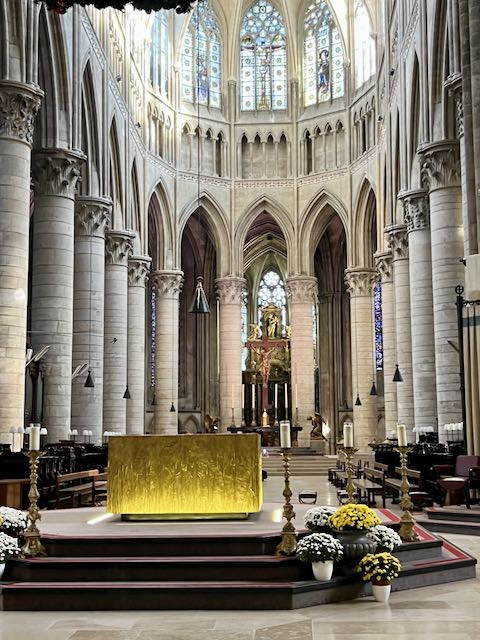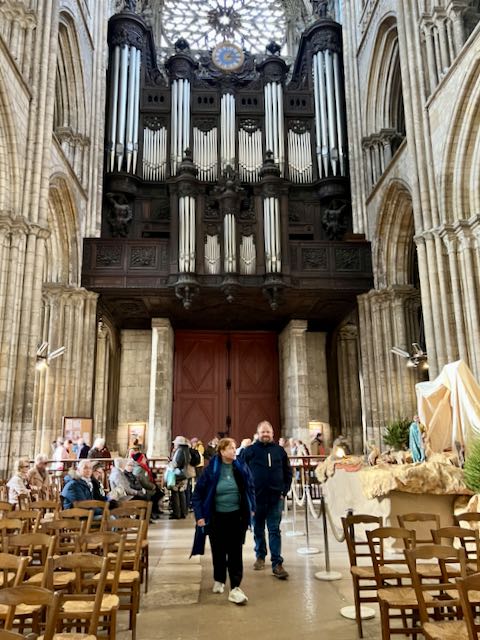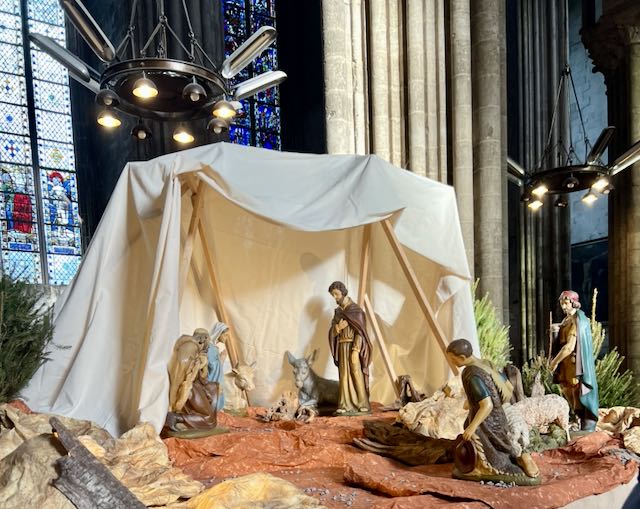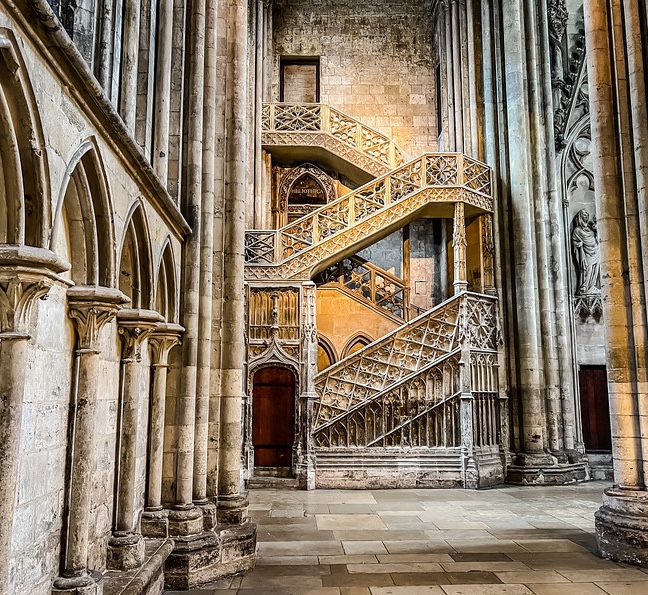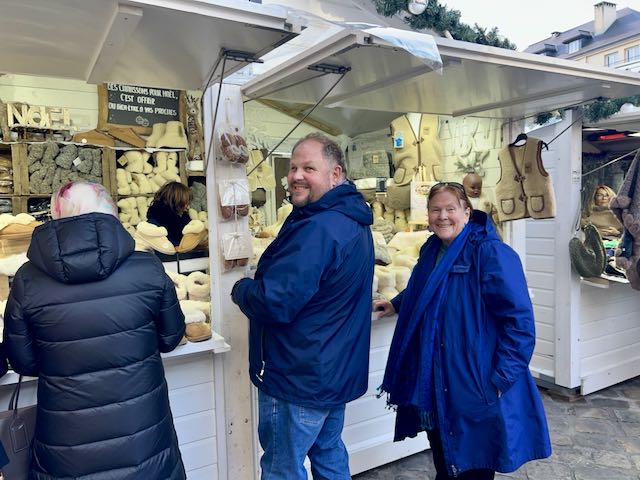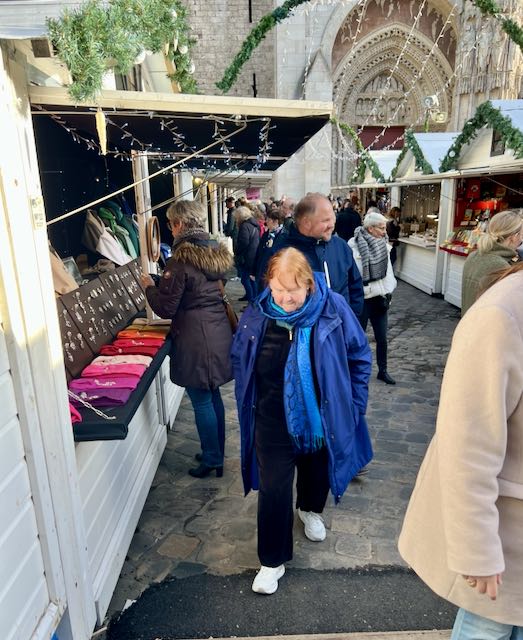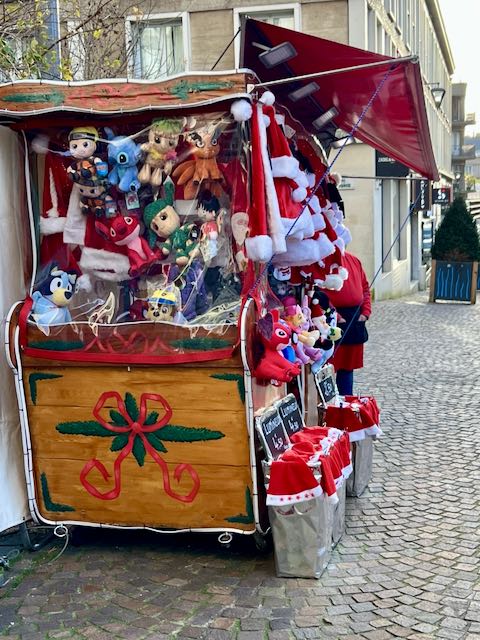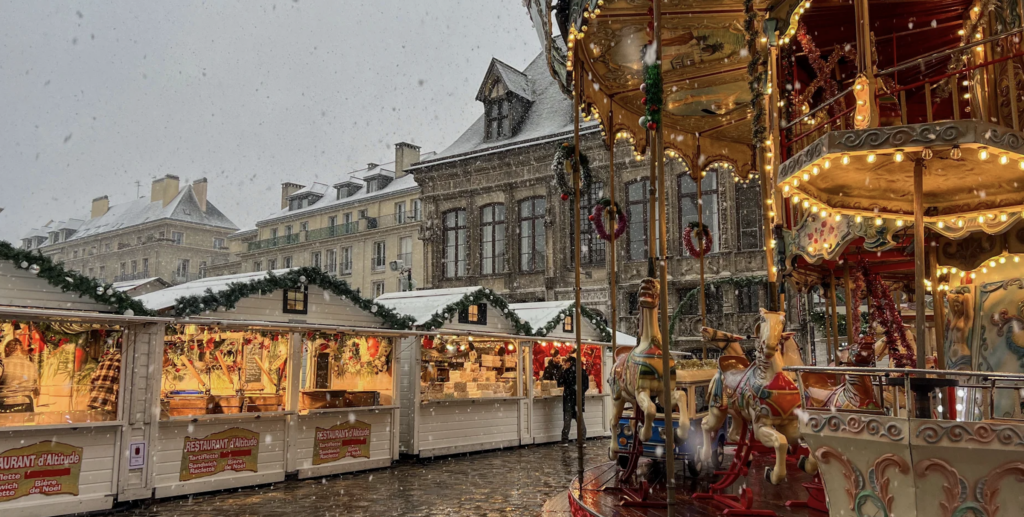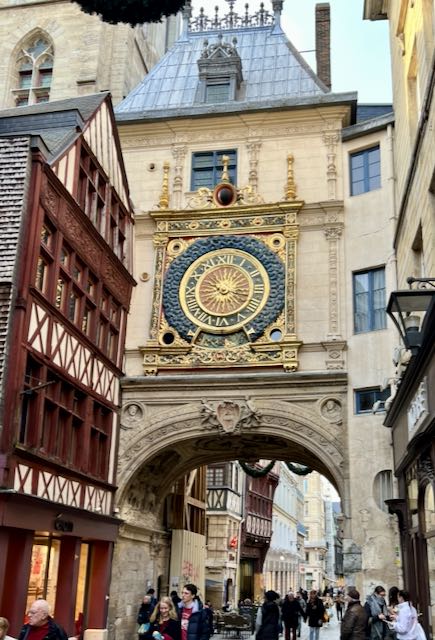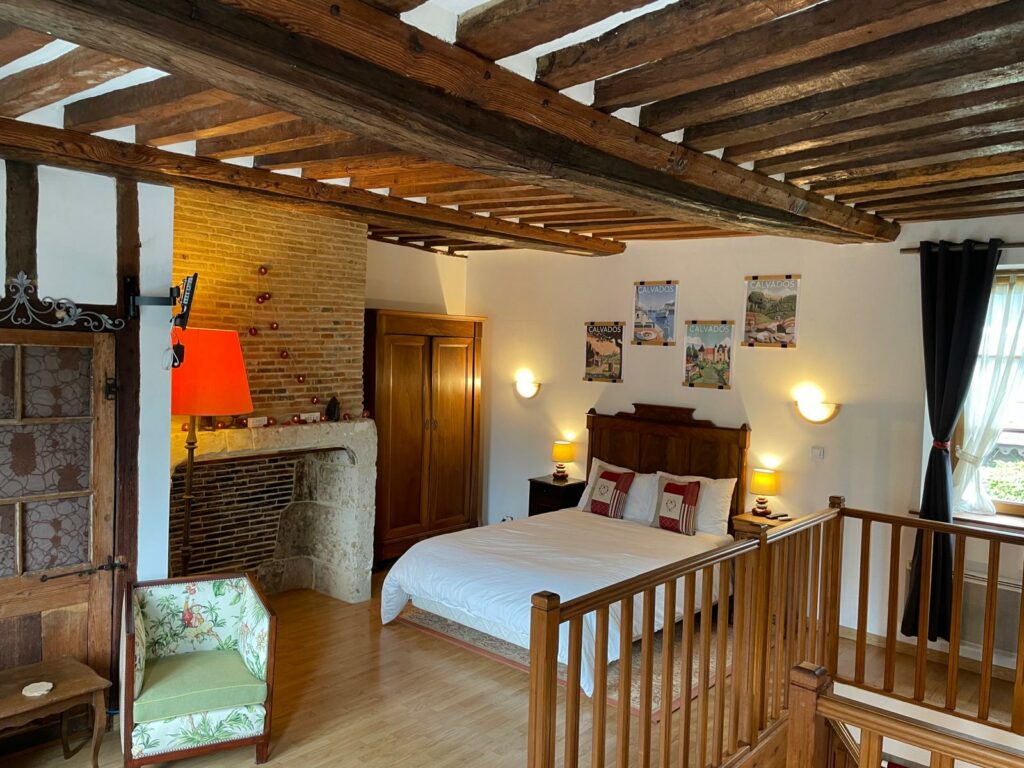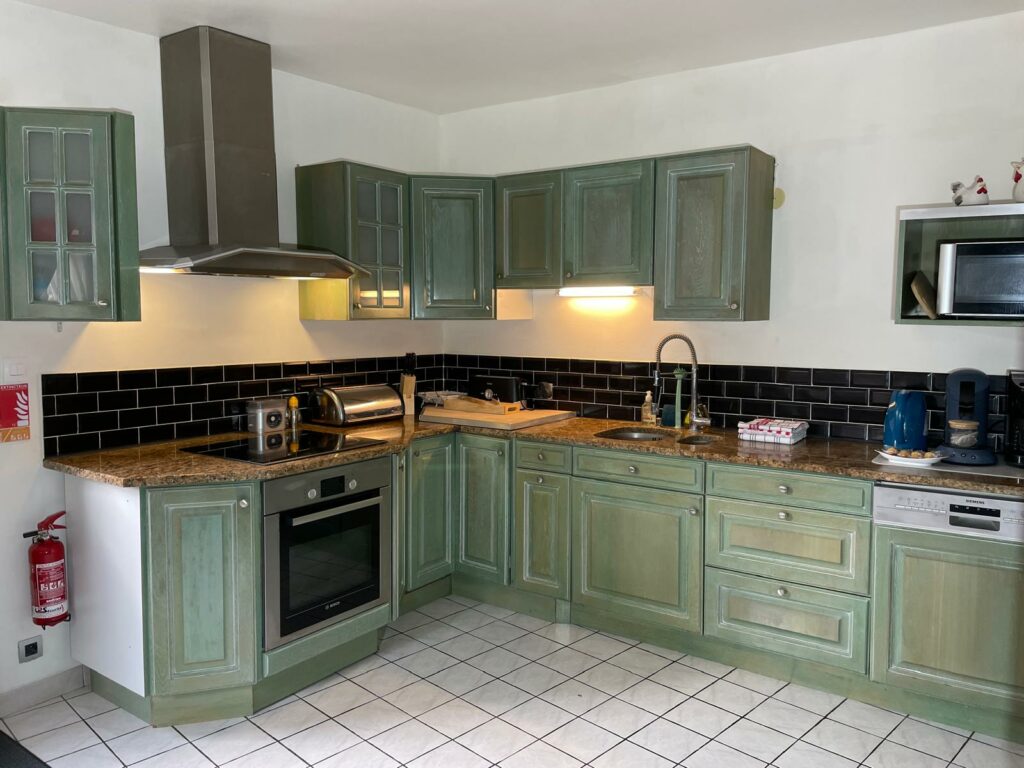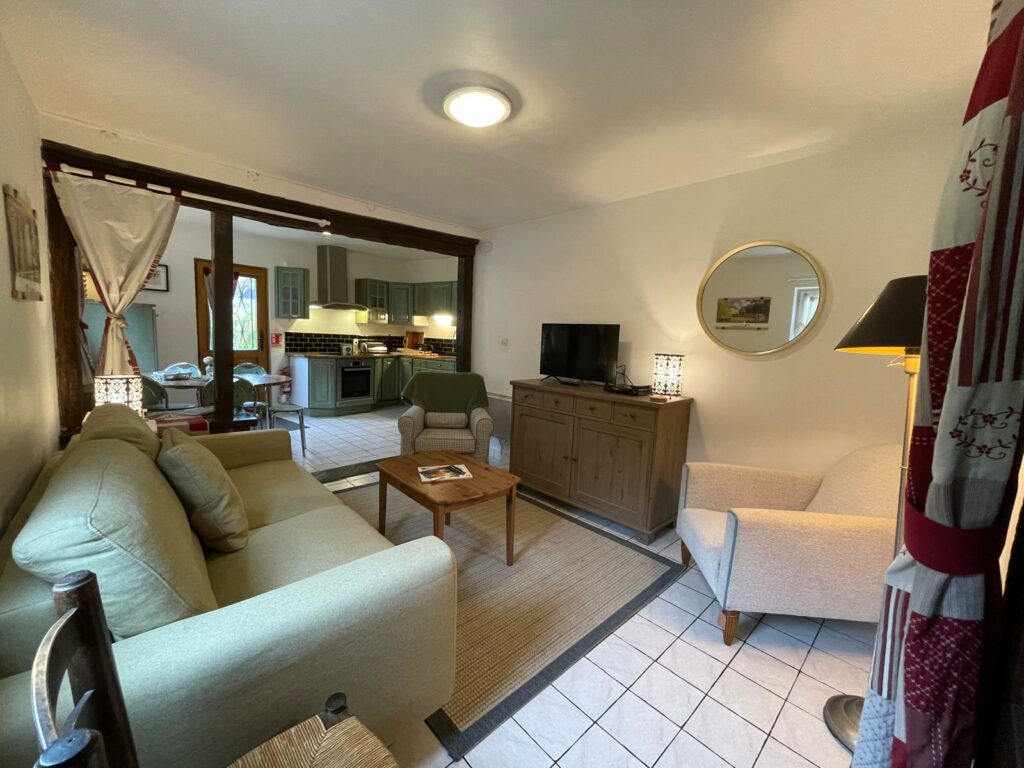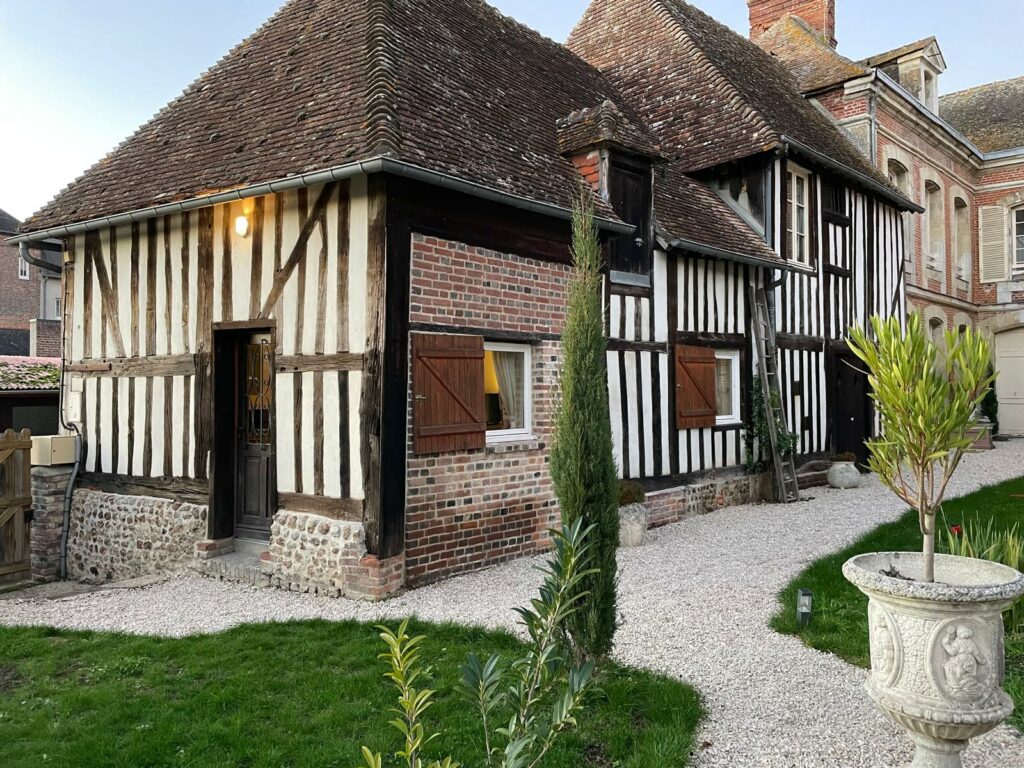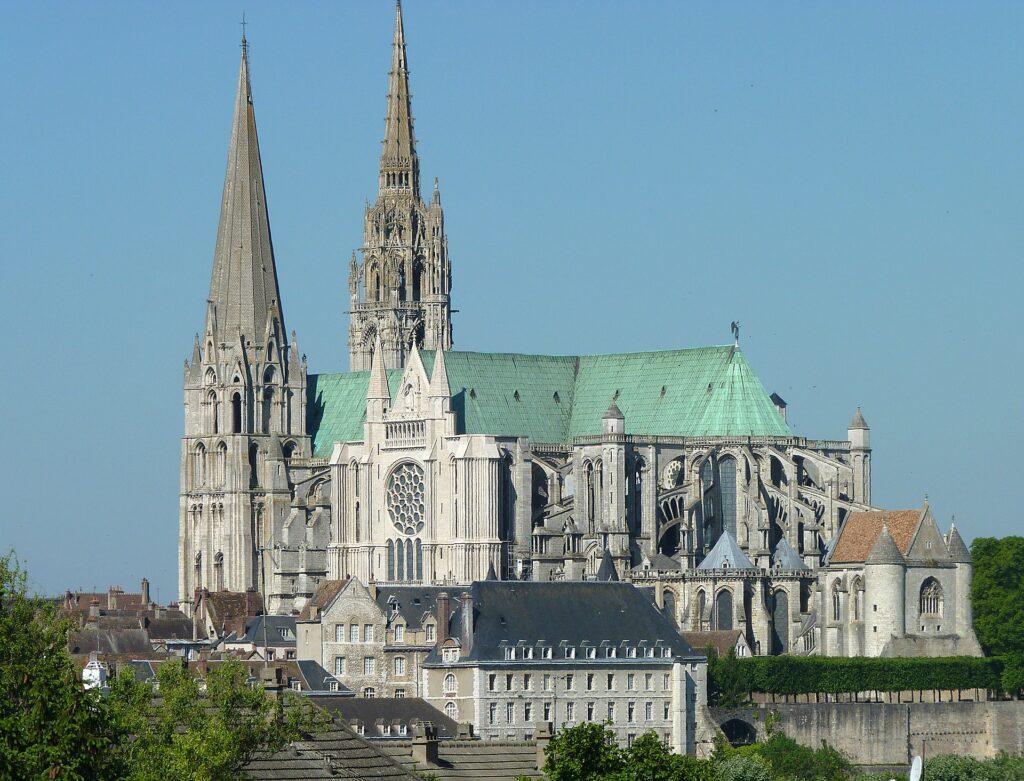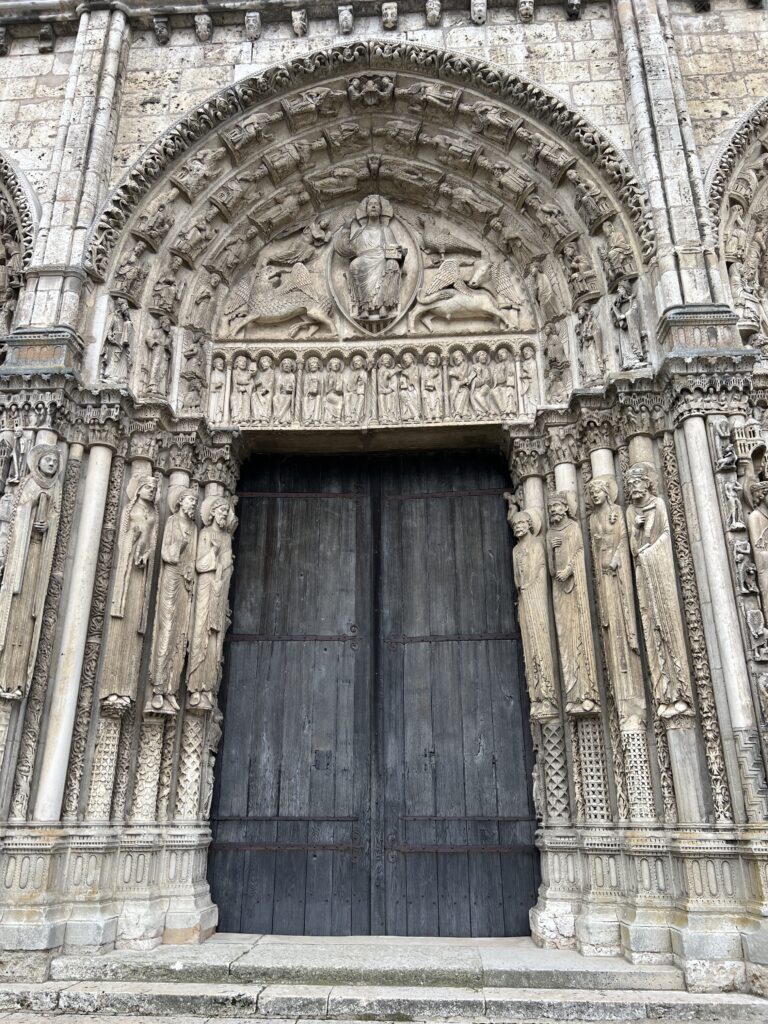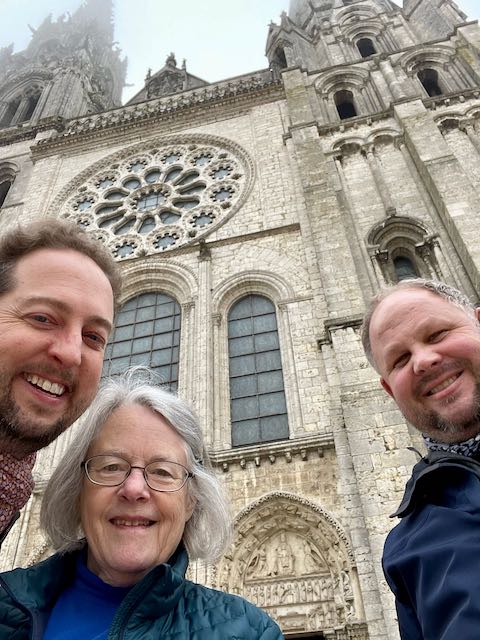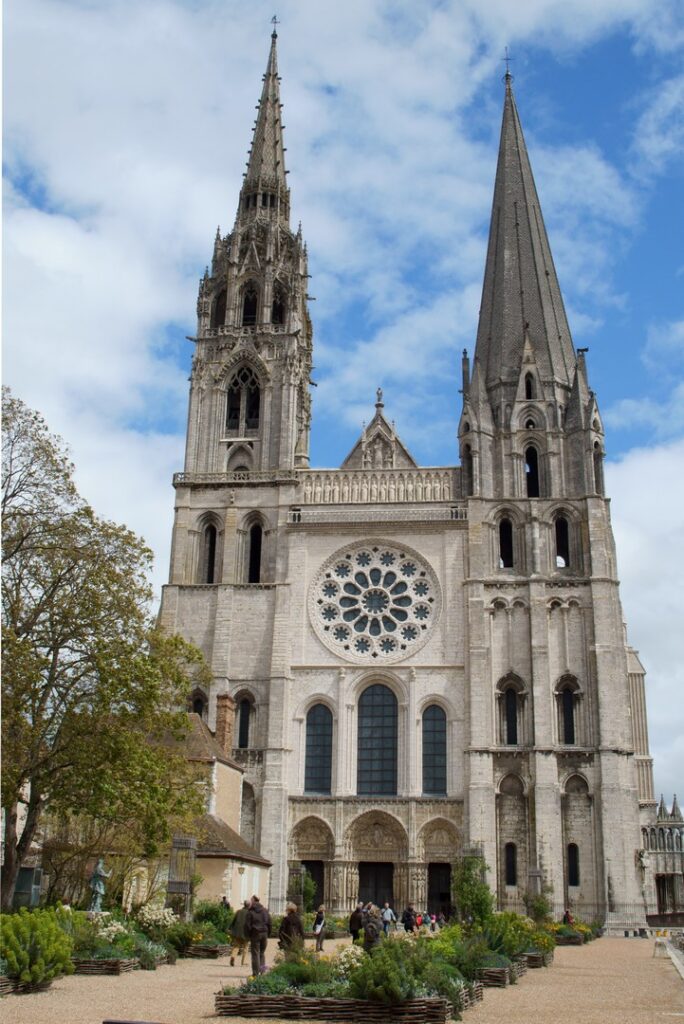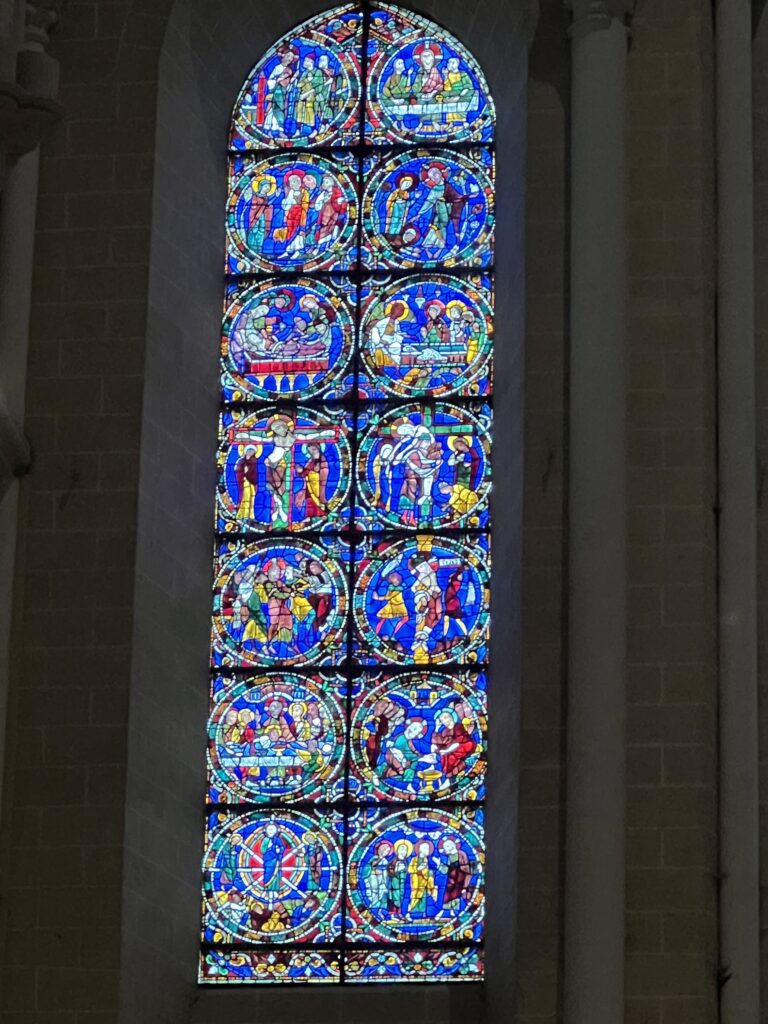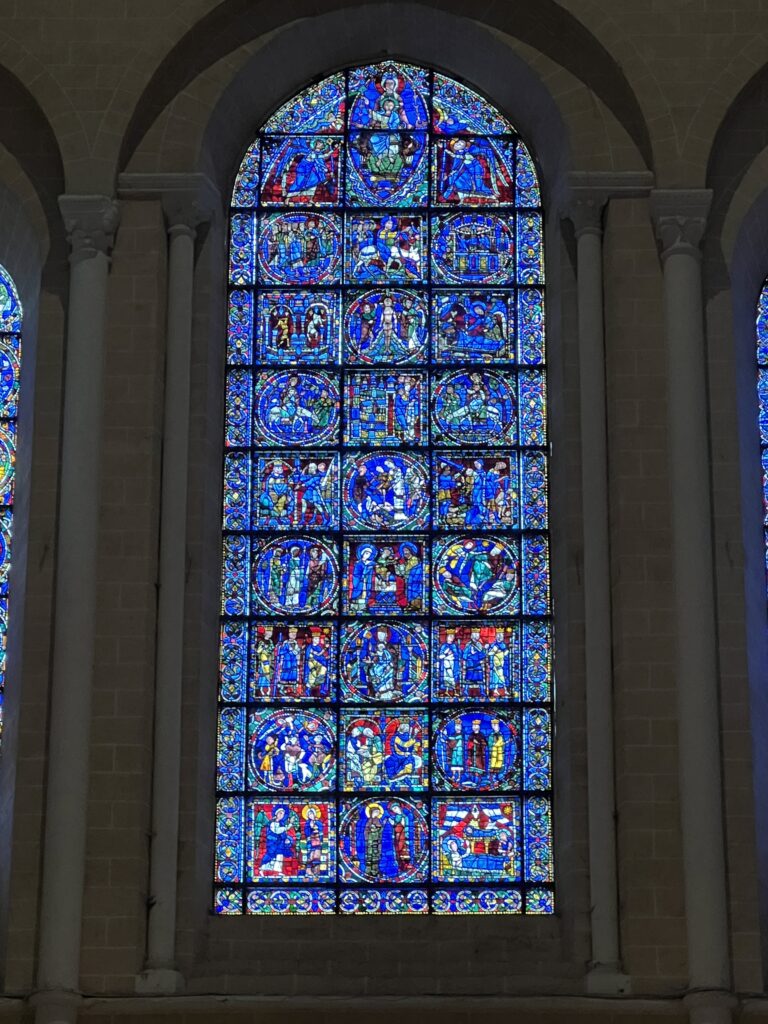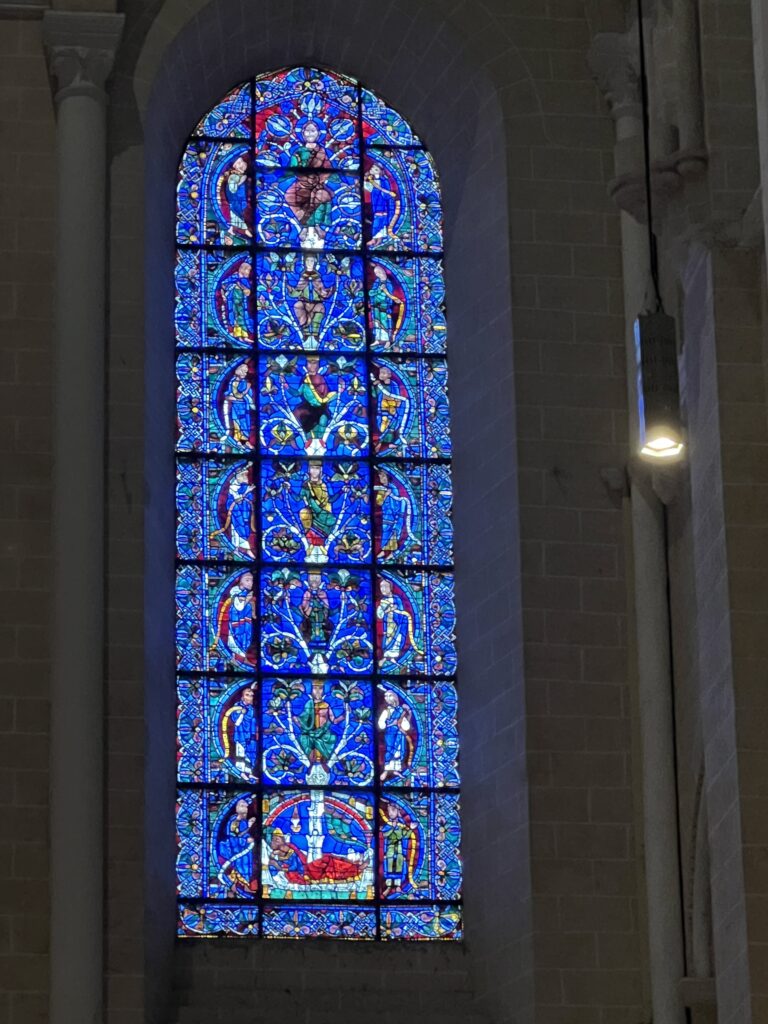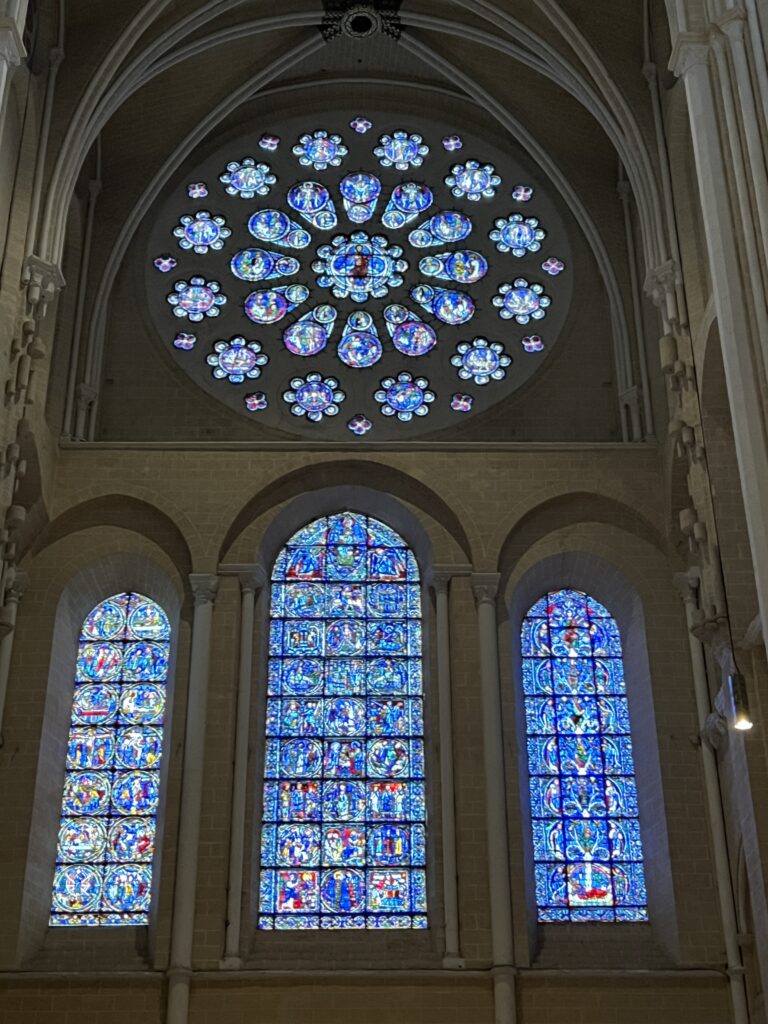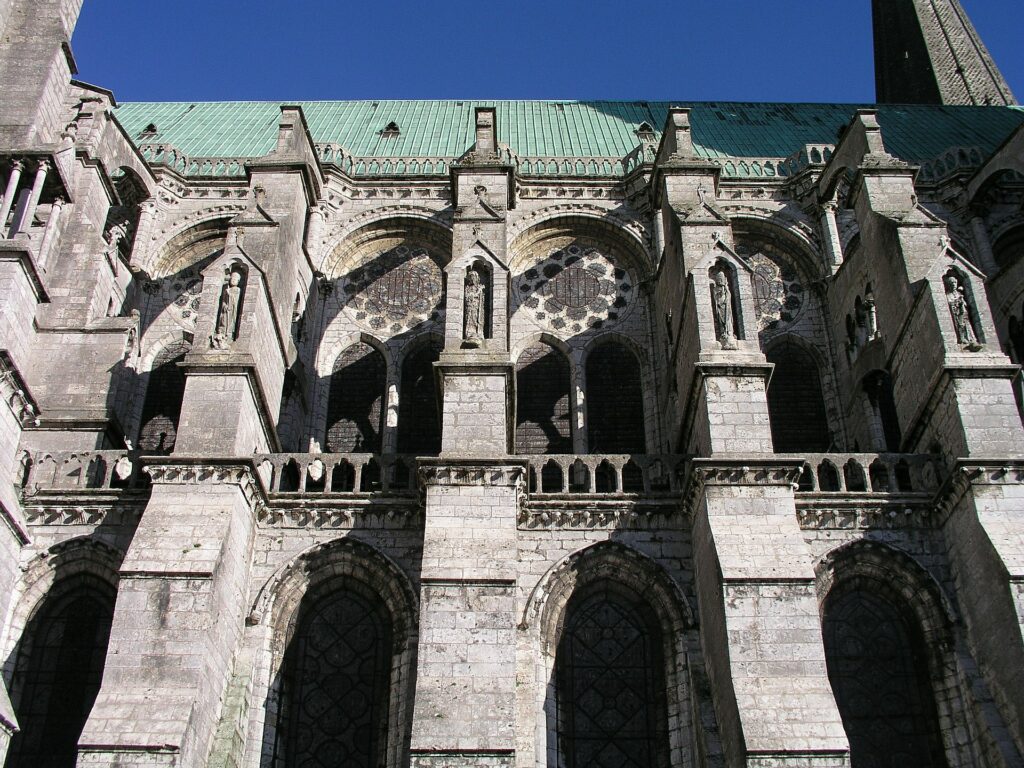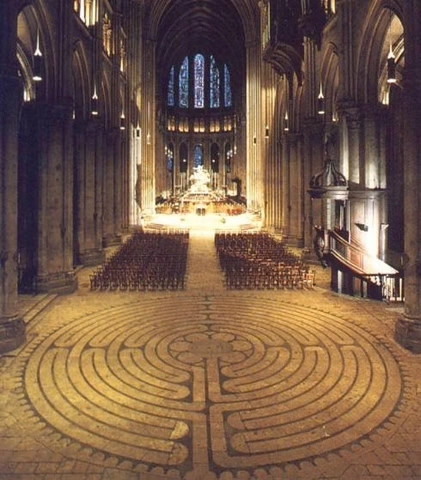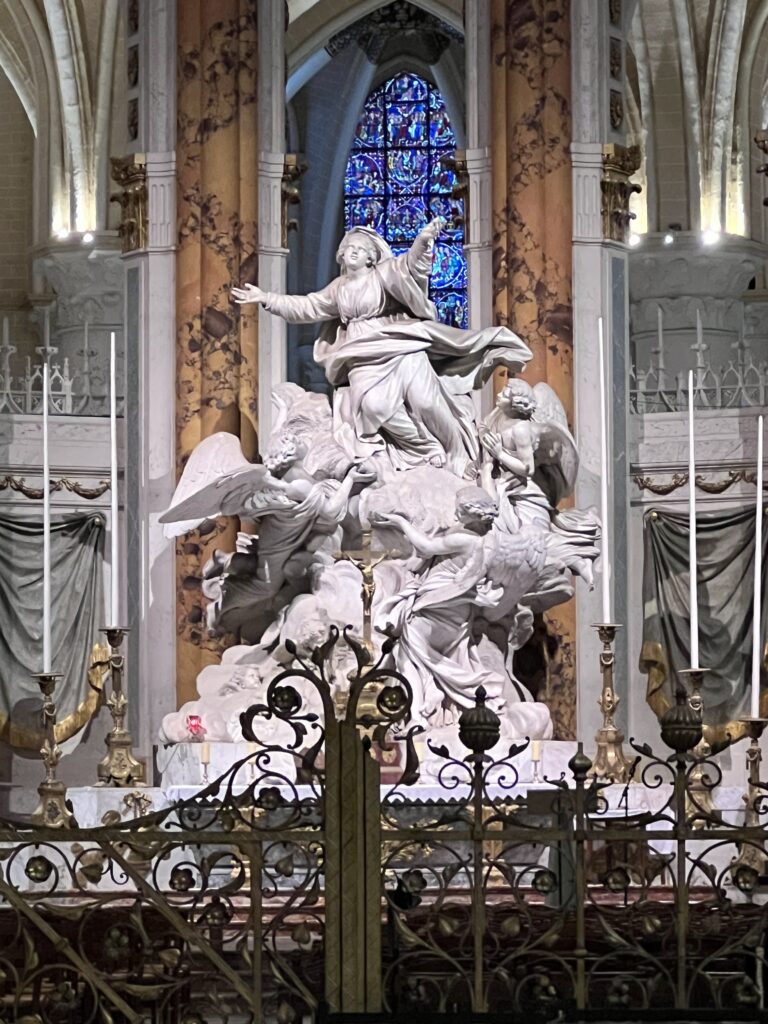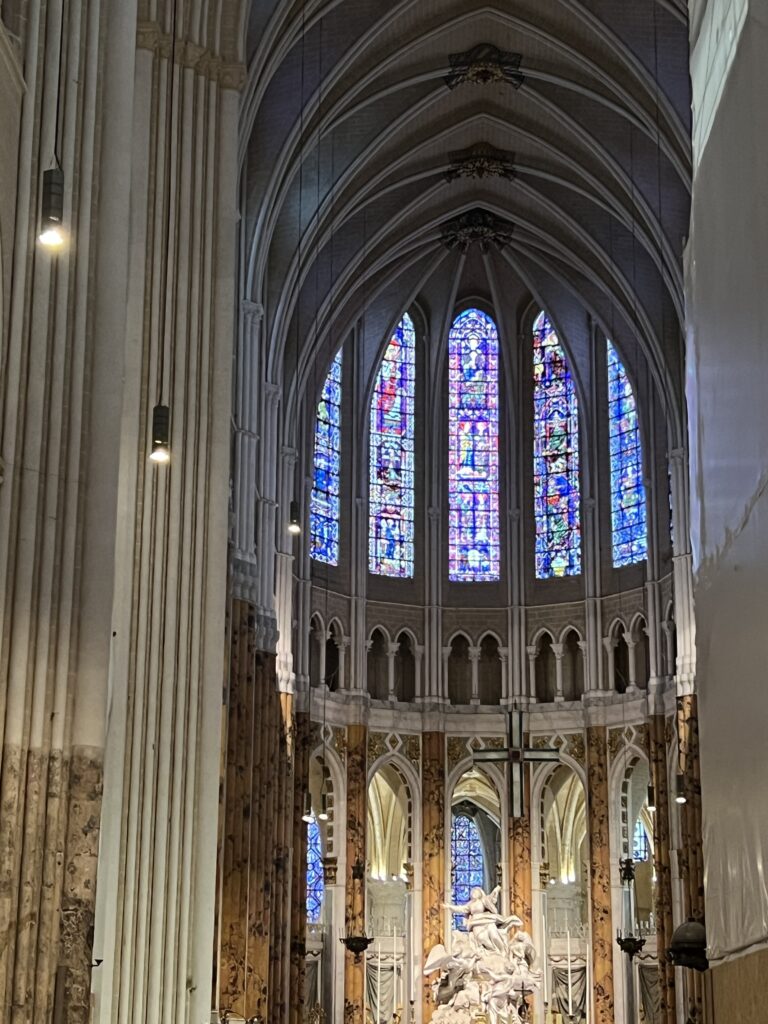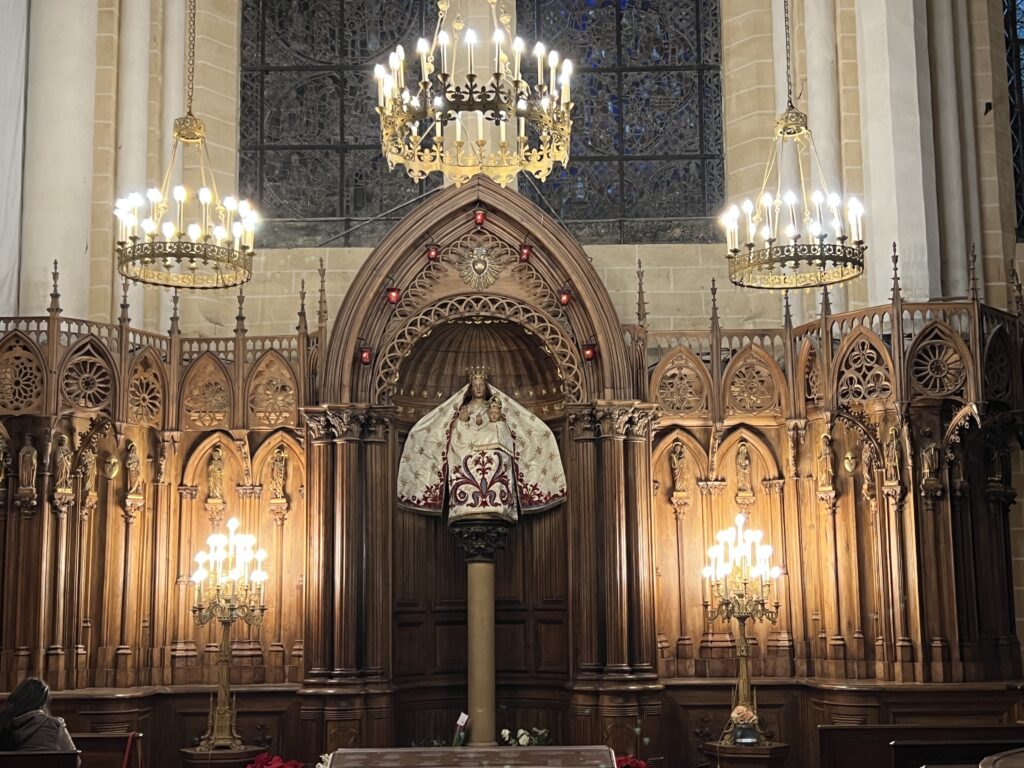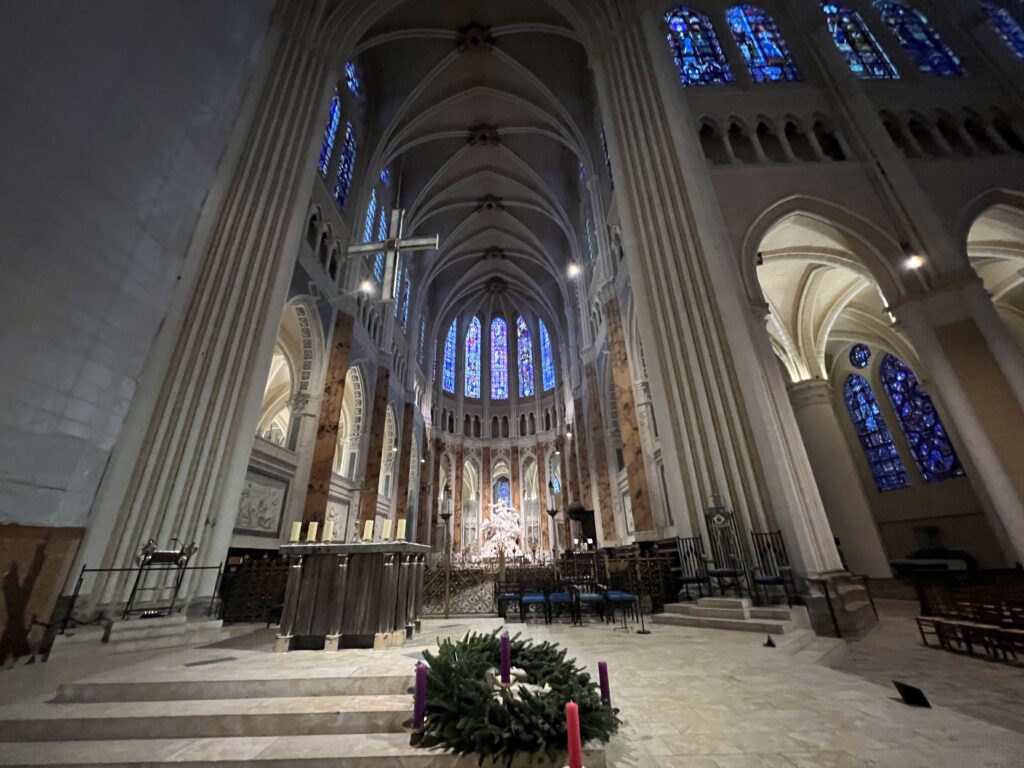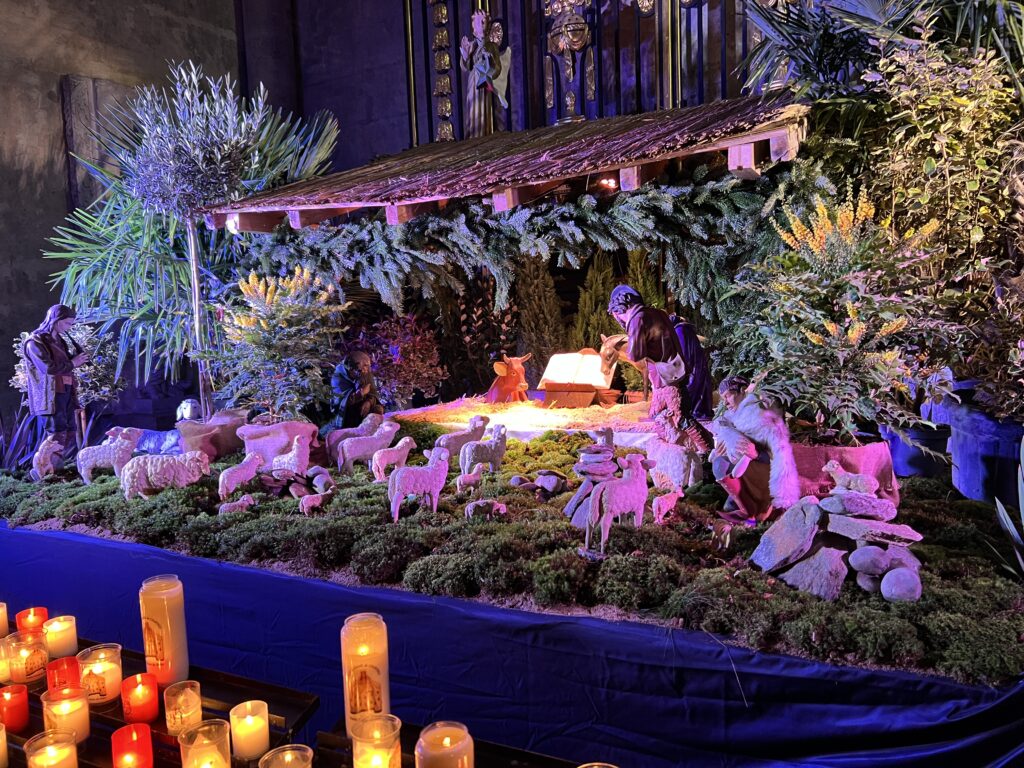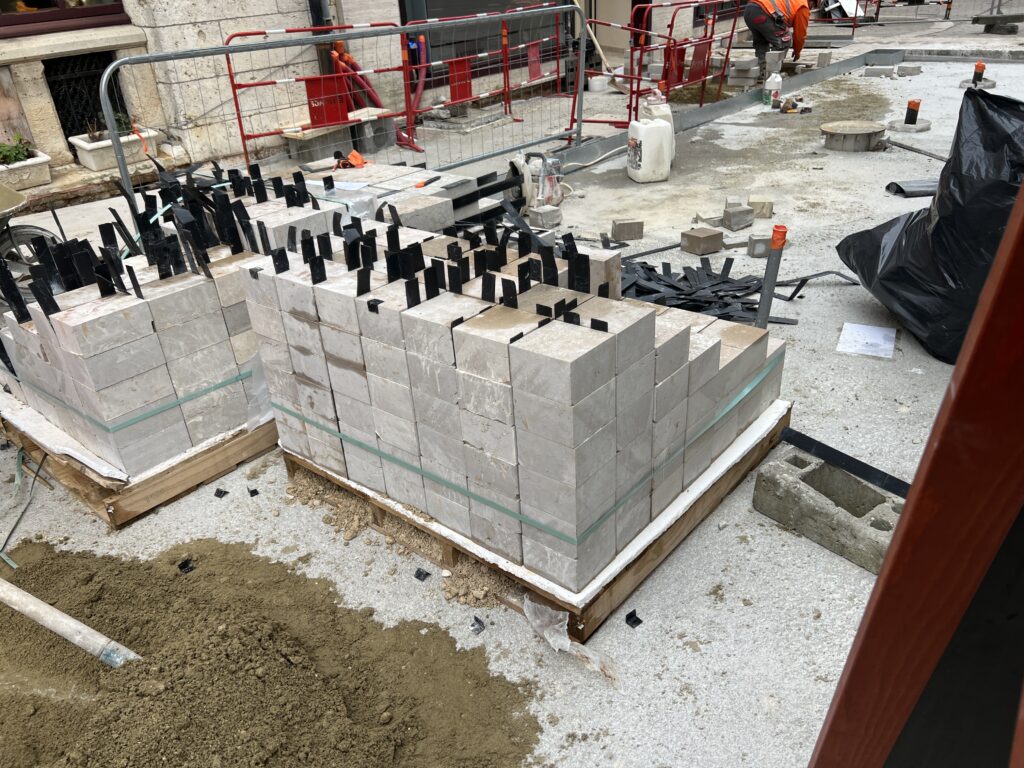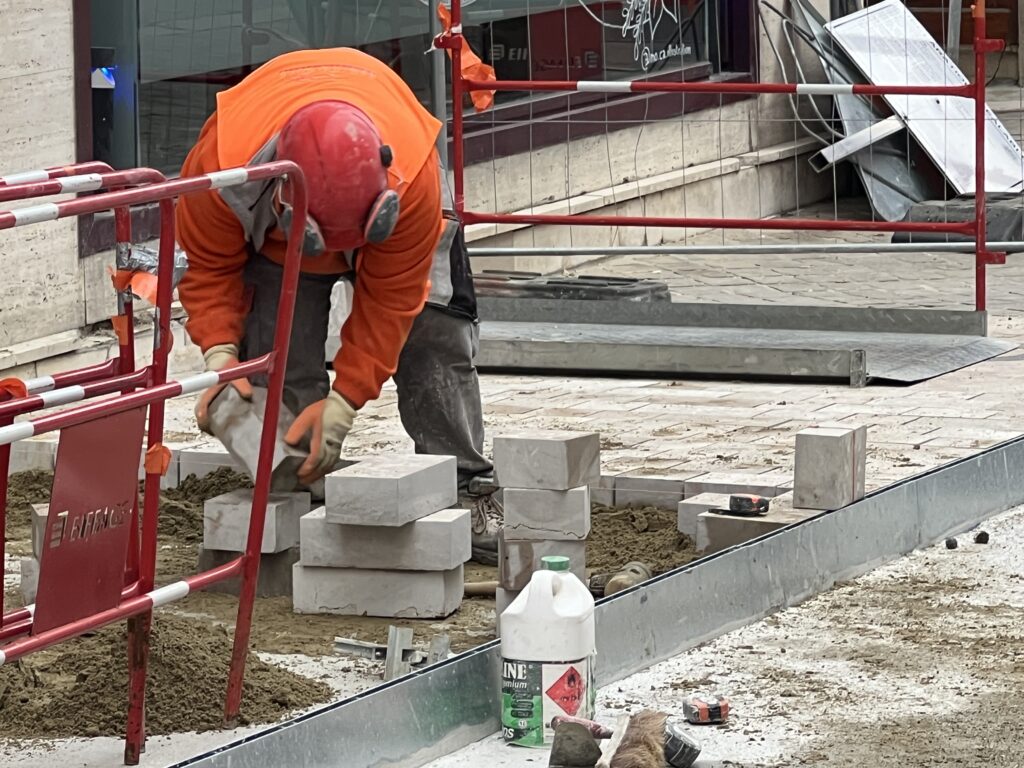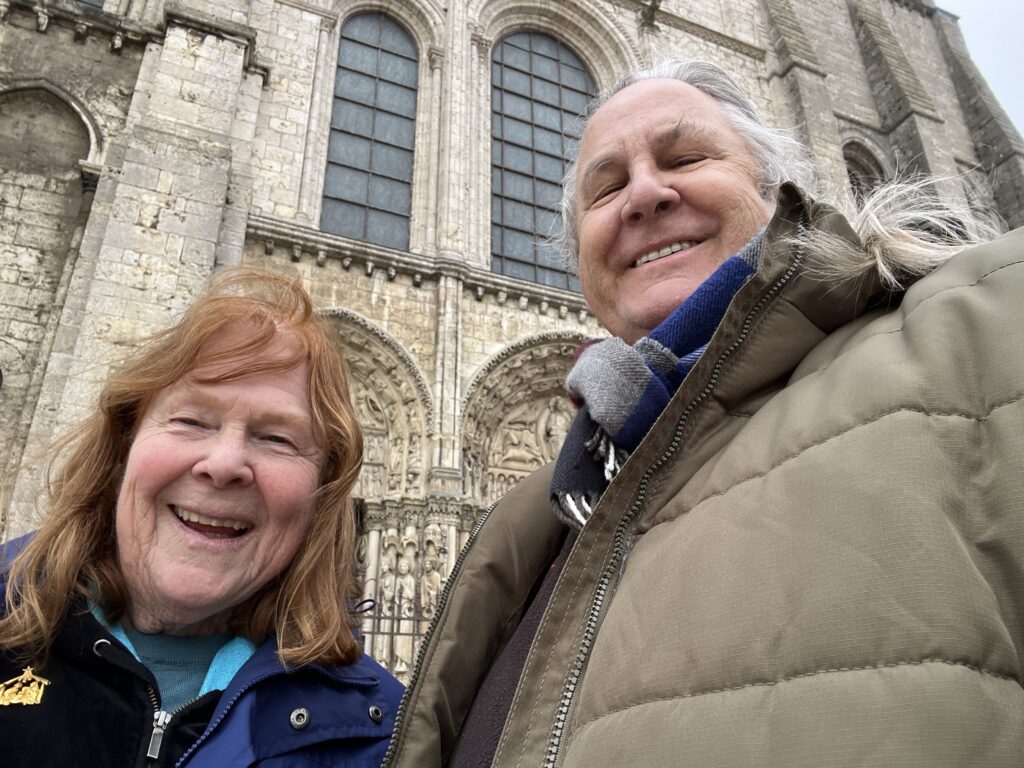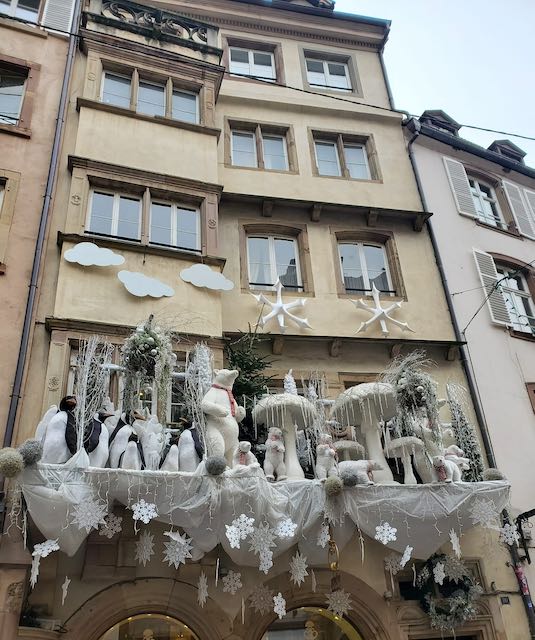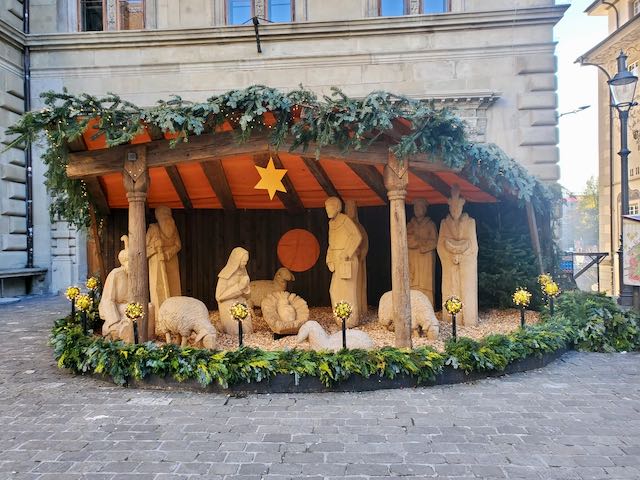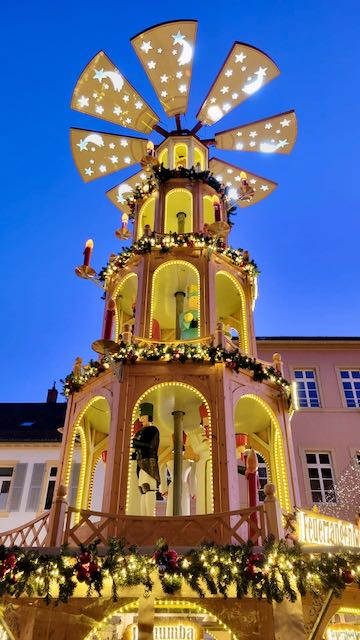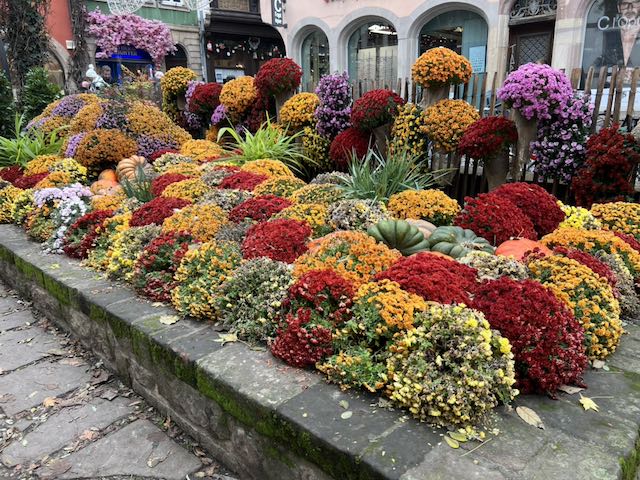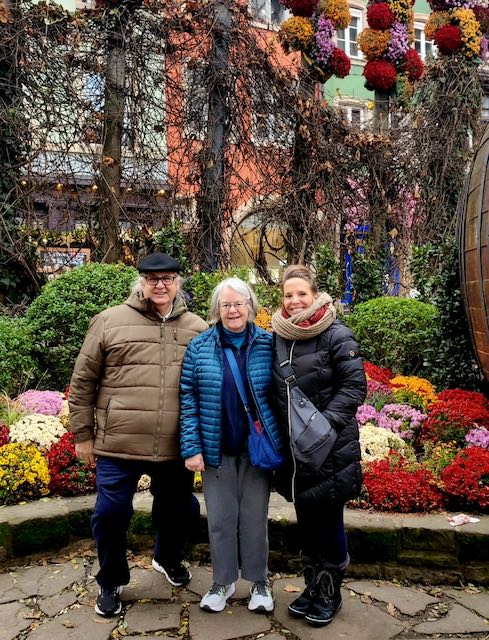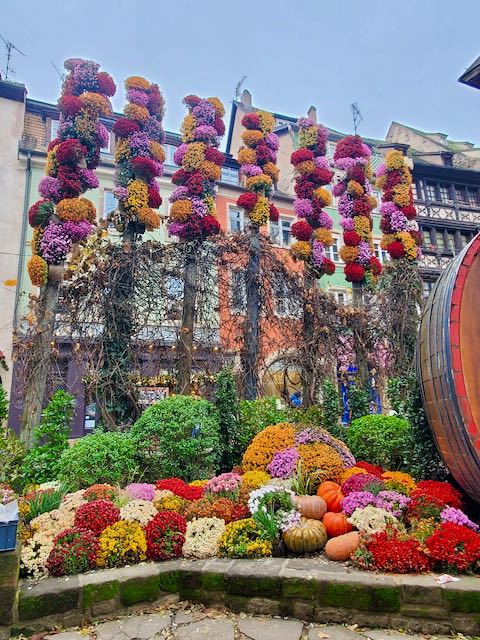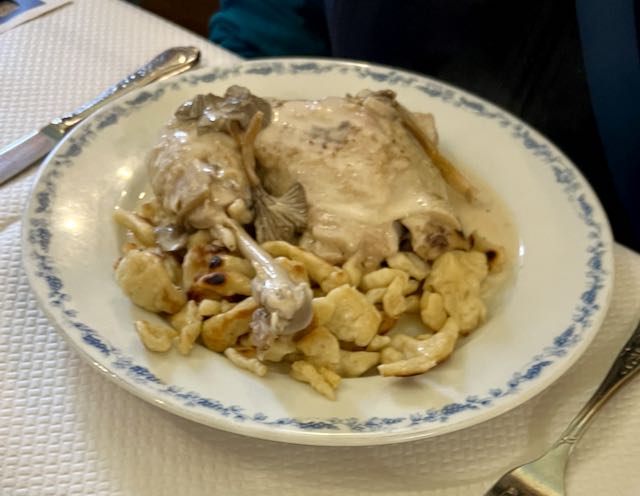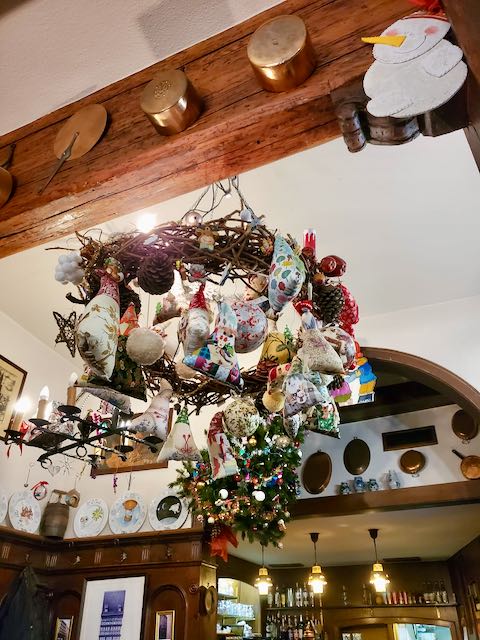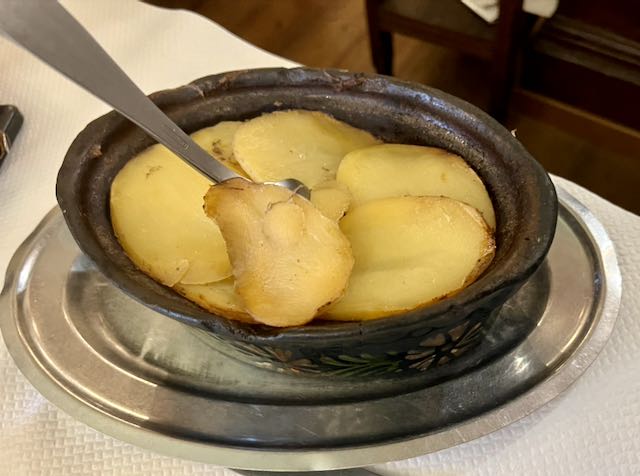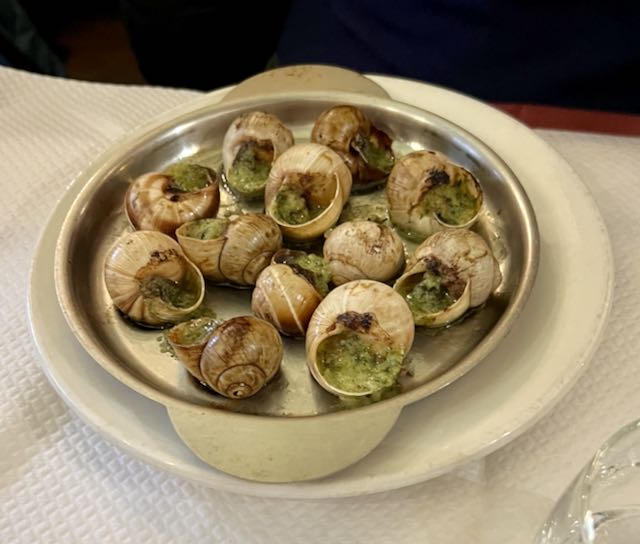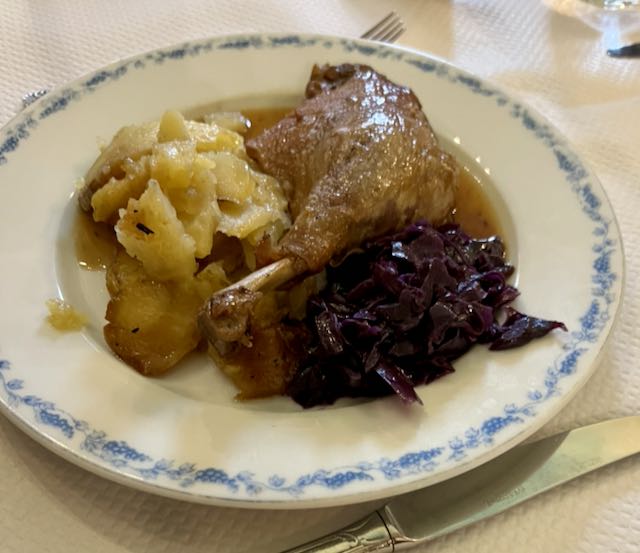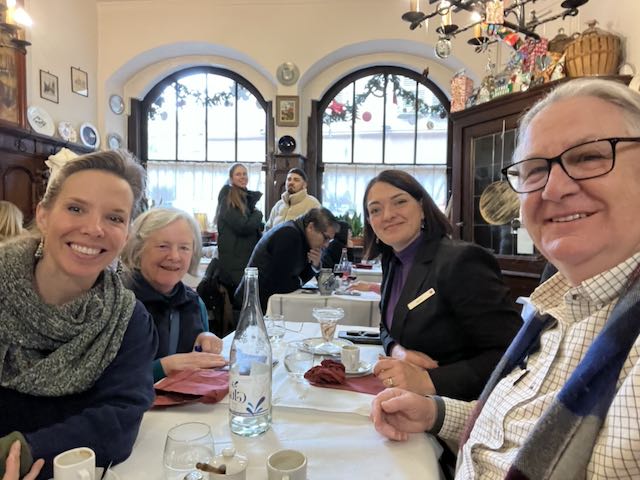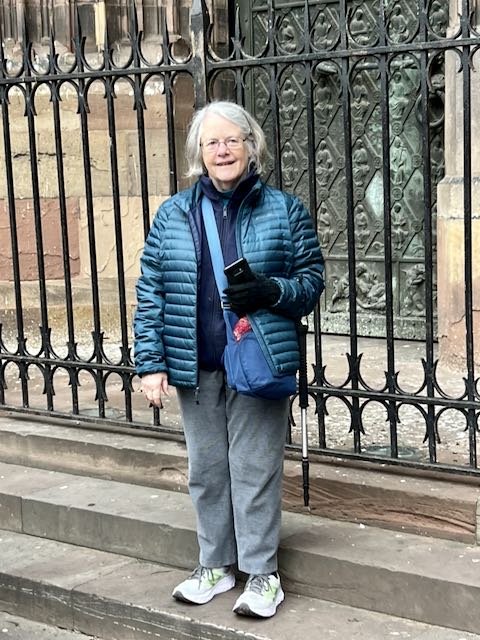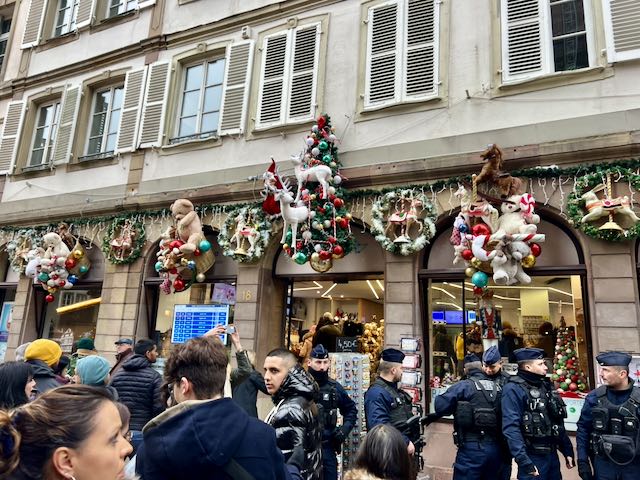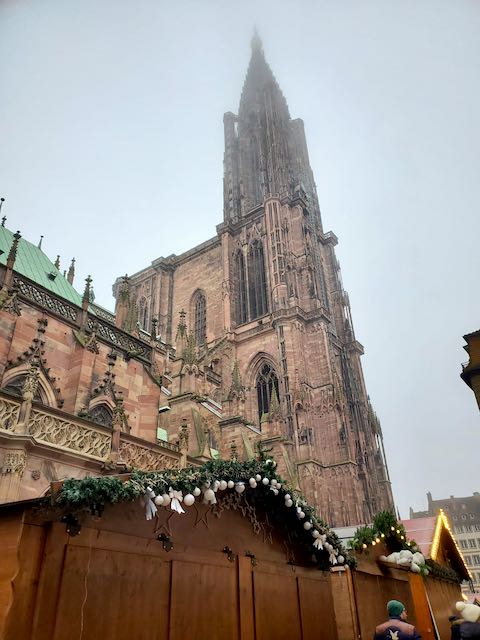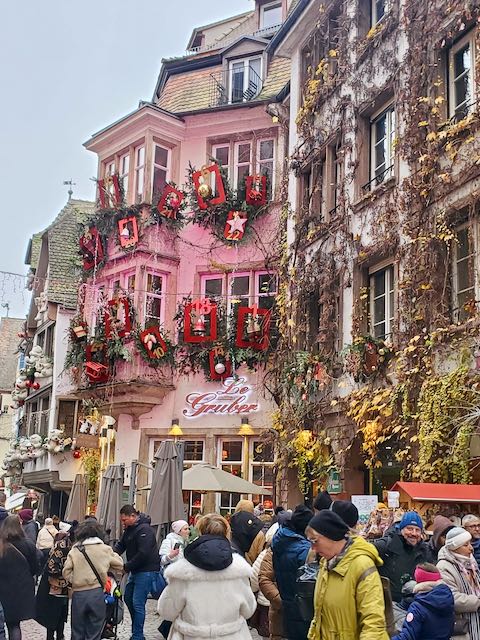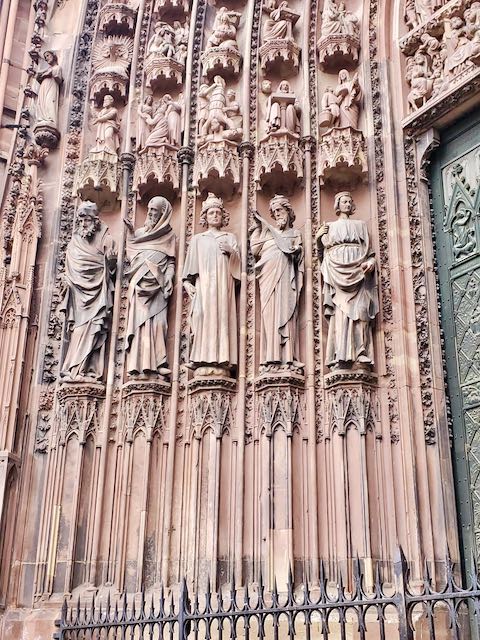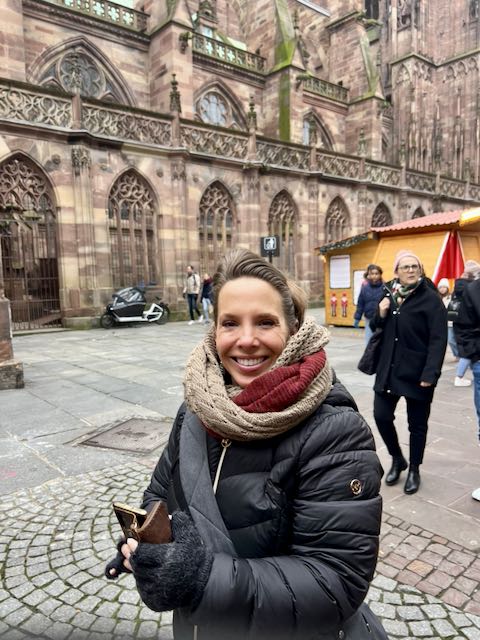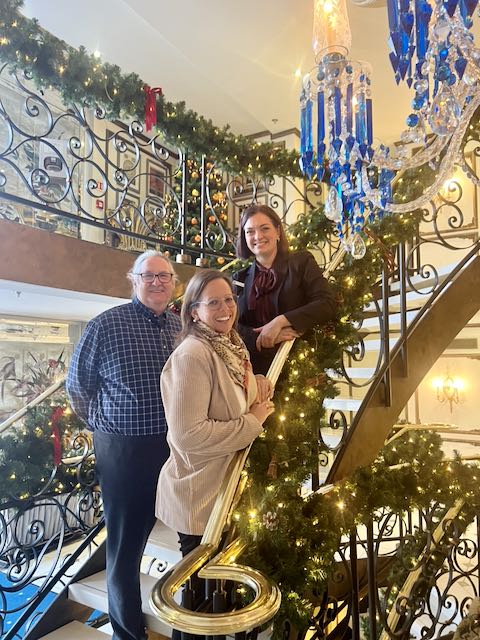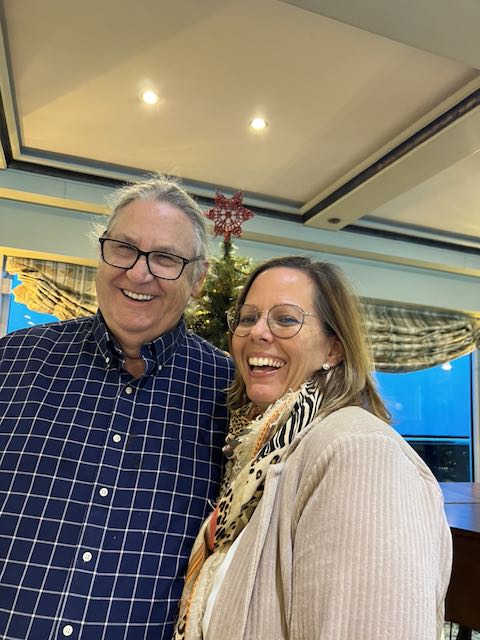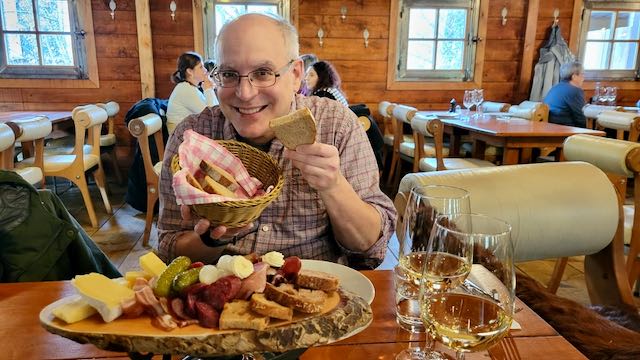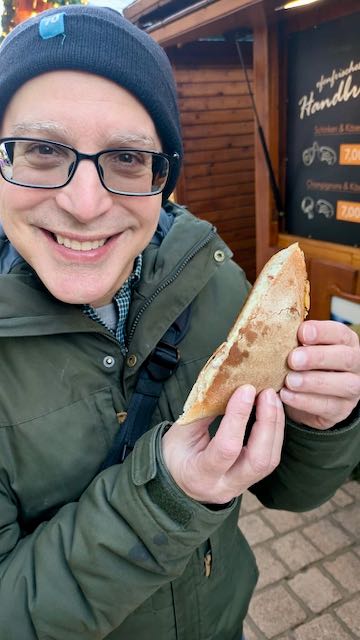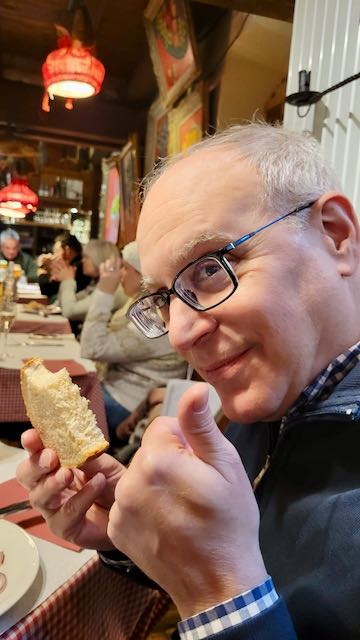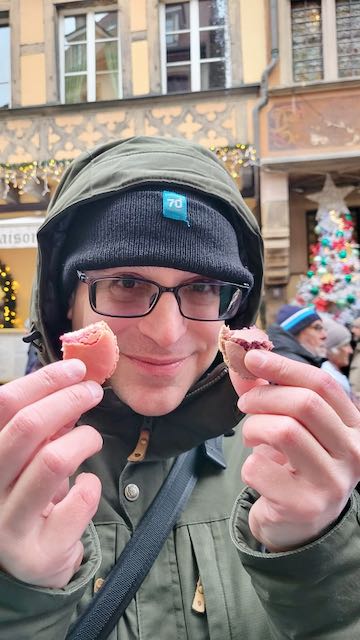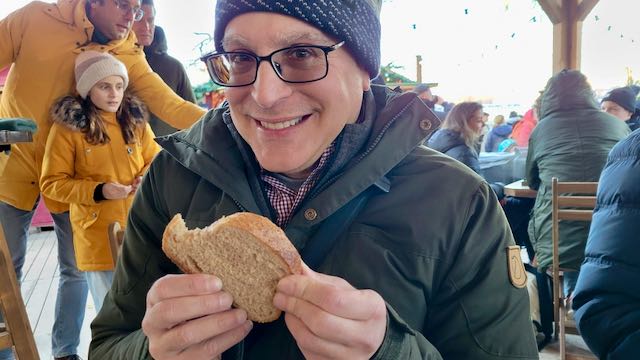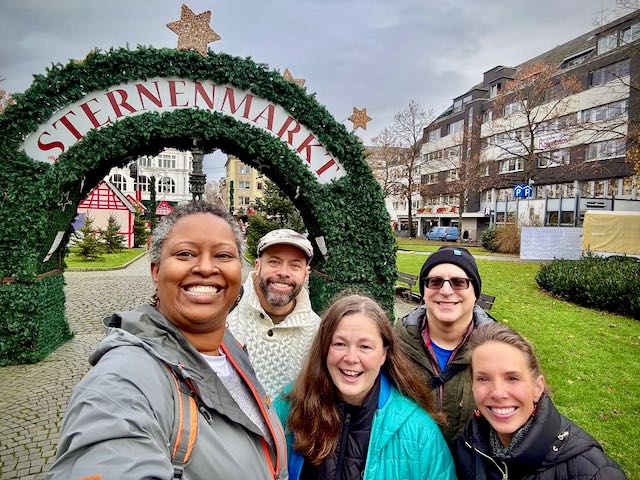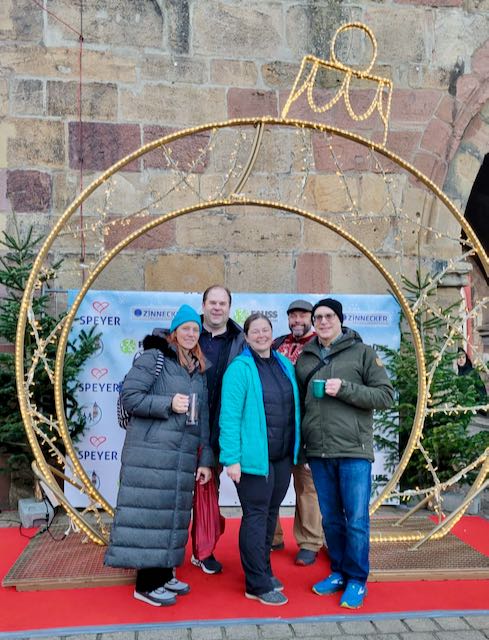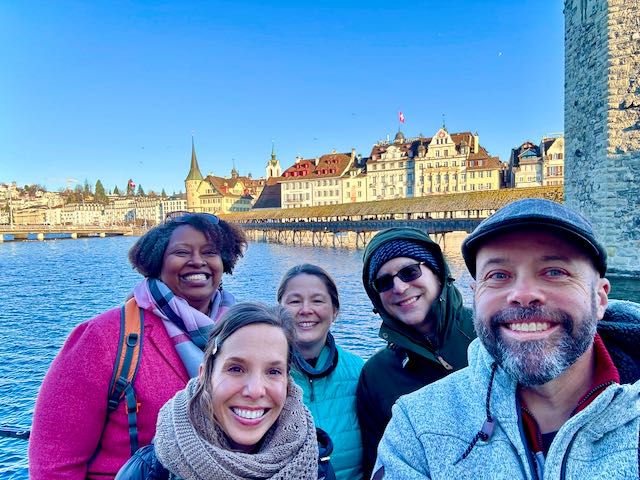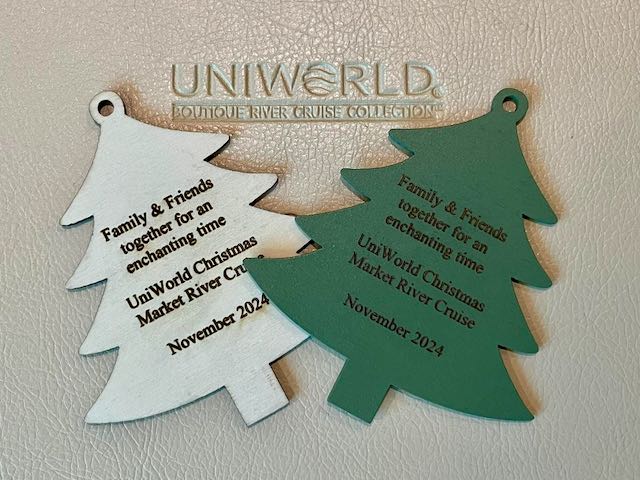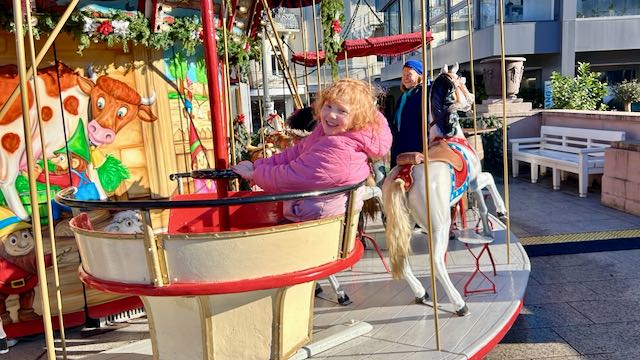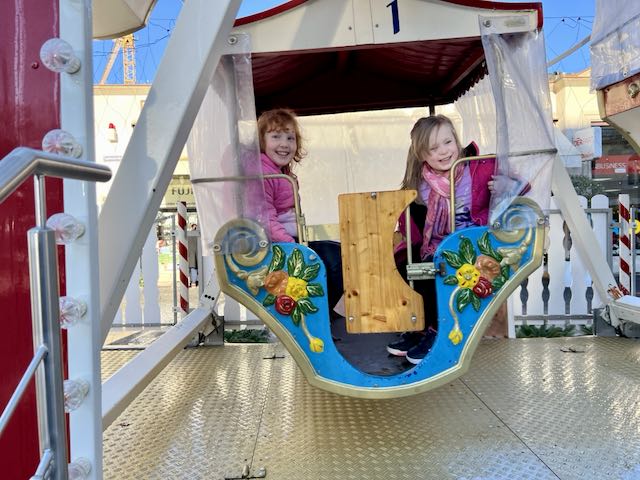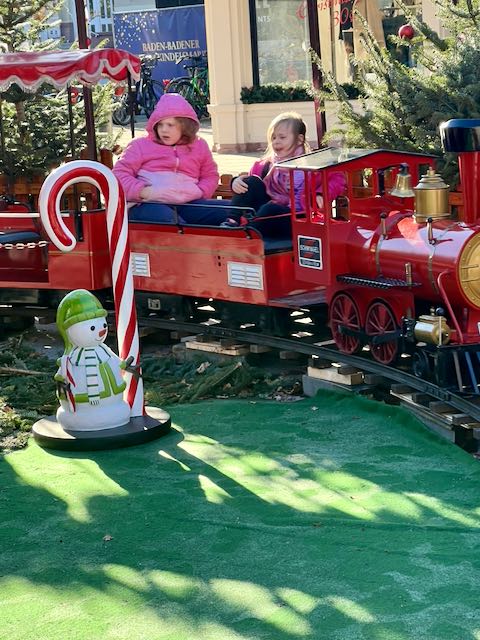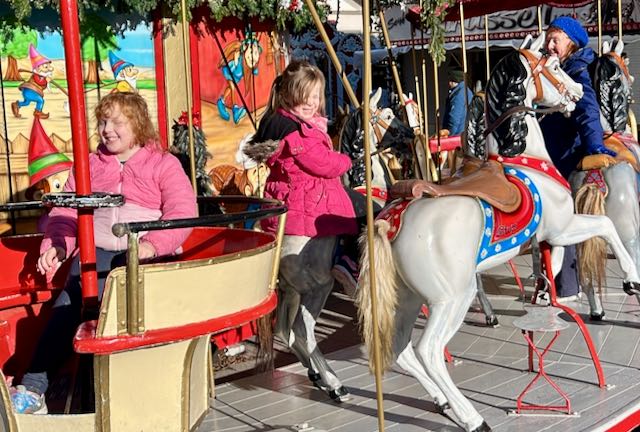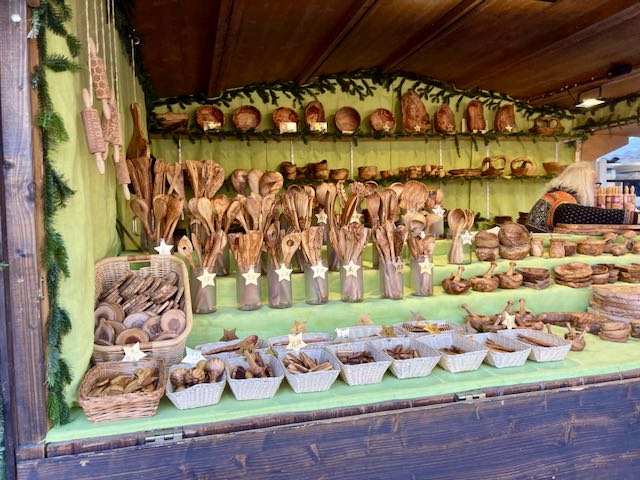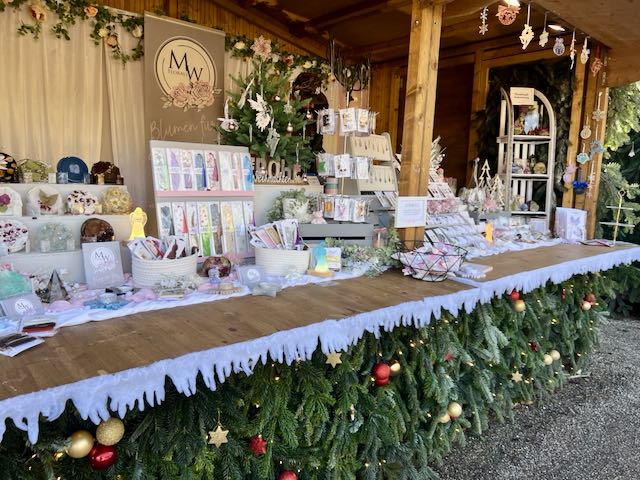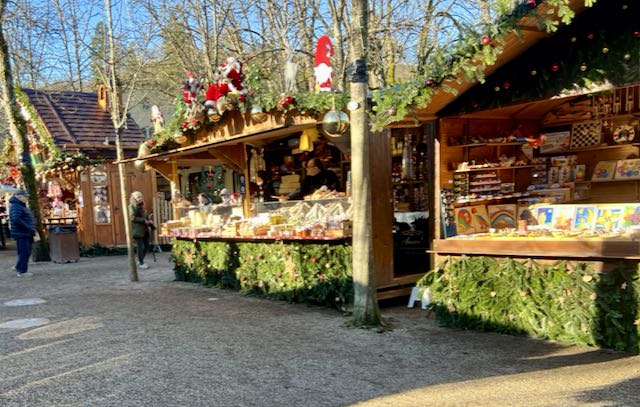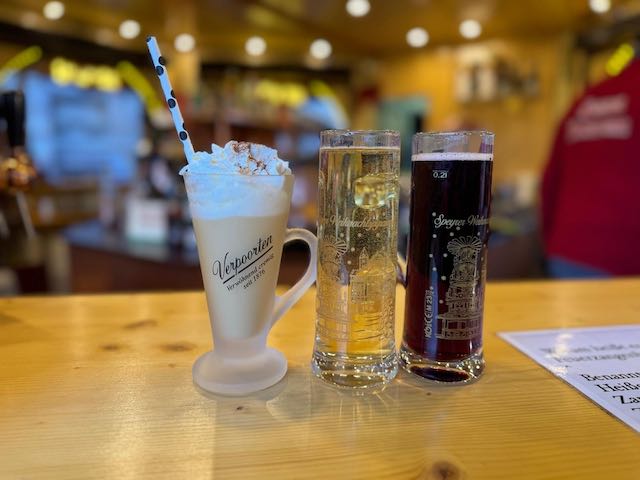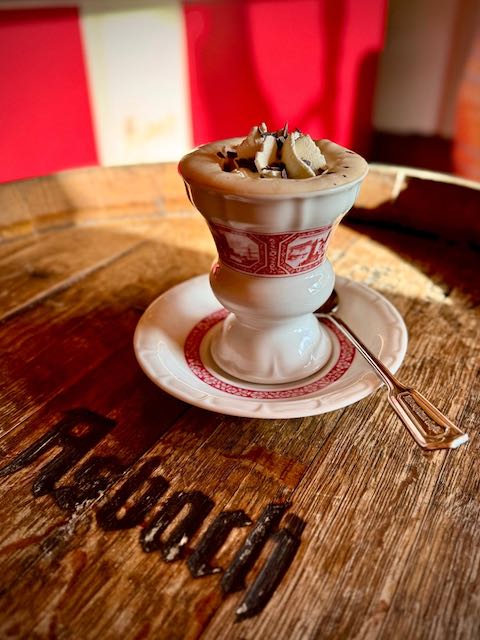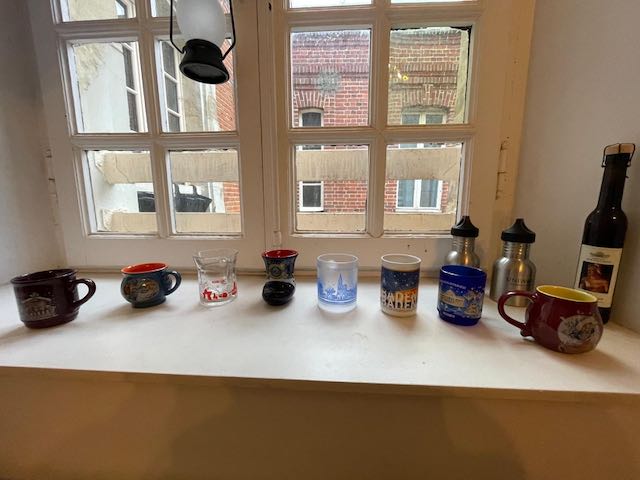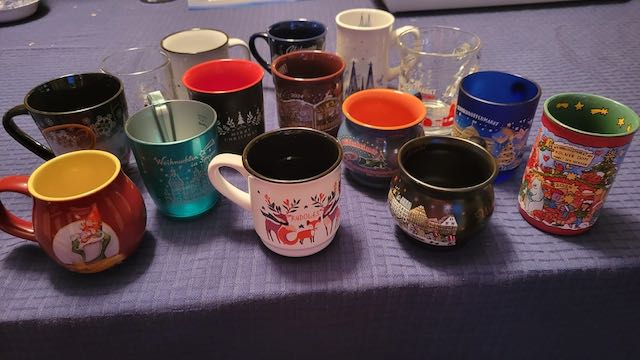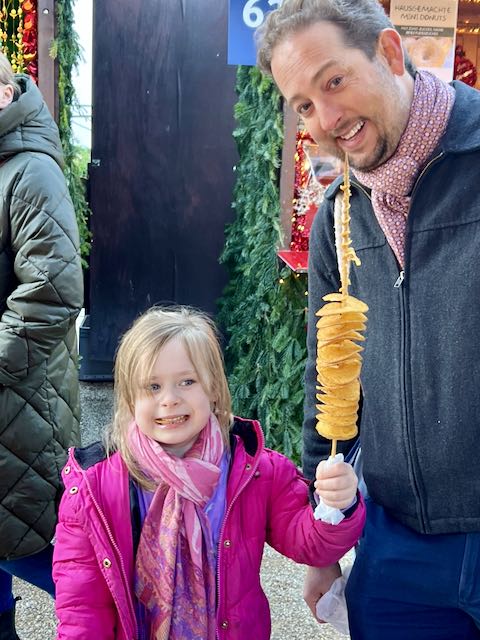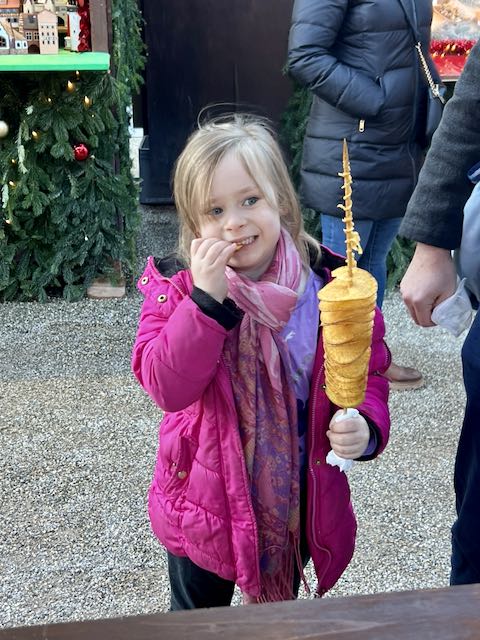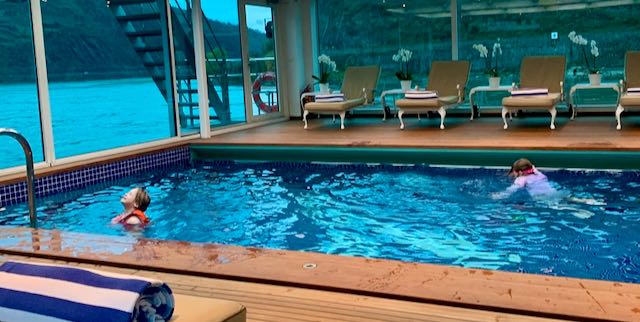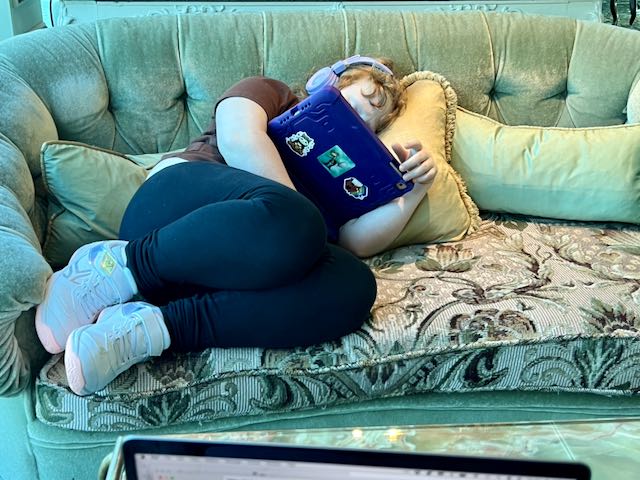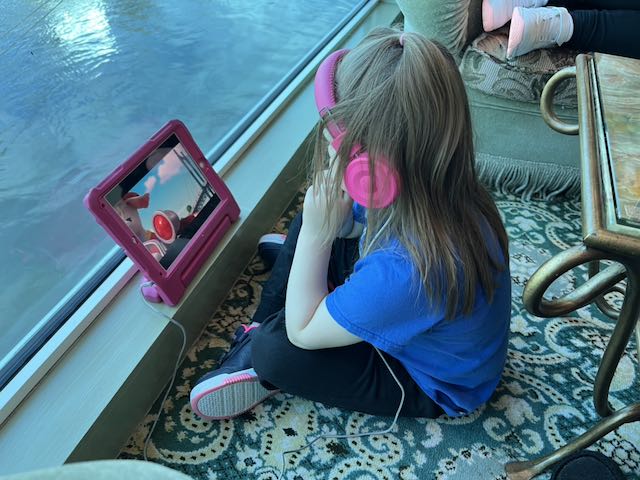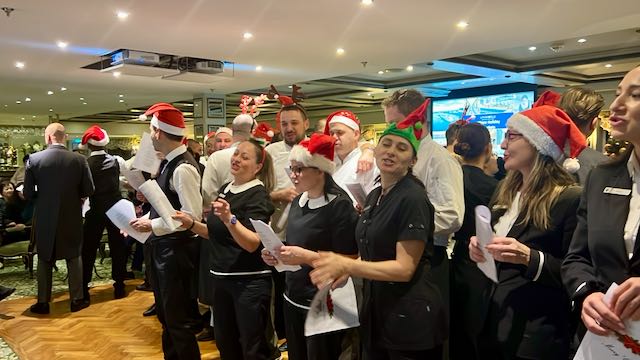Our first trip to Europe was in the summer of 2004. This included a couple of days in Paris. Unfortunately, not knowing anything about France, we ending our visit around Bastille Day mid-July where it was usually HOT and extremely busy with many places closing to join in the celebration. We did visit many of the important sites including getting to Notre-Dame de Paris. However, on this visit, we didn’t go inside.
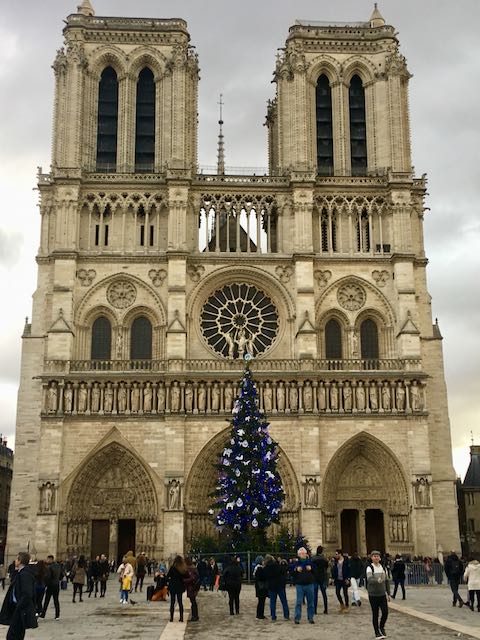
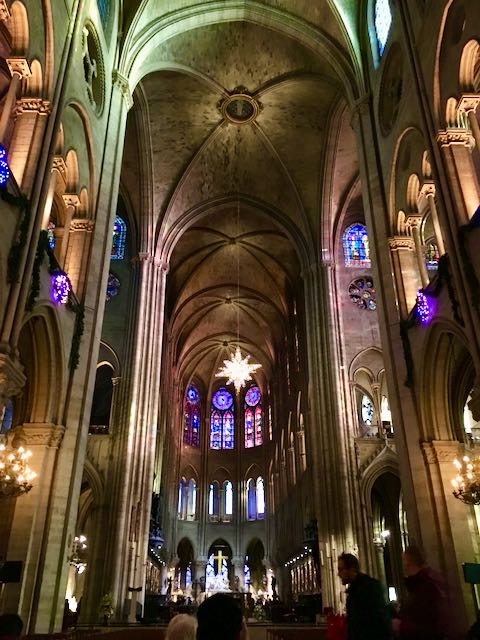
These two pictures were taken during a visit in December 2018. Really difficult to see all the interior of the Cathedral.
Several years later we returned to Paris and finally went inside this monumental Cathedral. On our return visits we always made a point of going inside and admiring the beauty of the place including a couple years, when we were in Paris for Christmas. The interior always struck us as filled with art, beautiful stained- glass windows, but also quite dark. Maybe it was the time of day we visited or the lack of sun coming into the interior, but the overall impression I had was it was dark.
In the Spring of 2019, we were traveling in Europe, first in the south of France and then into the Amsterdam to join a cruise ending in Switzerland, eventually finding our way back to Paris. While we were traveling in Southern France, we learned of the fire at Notre-Dame de Paris.
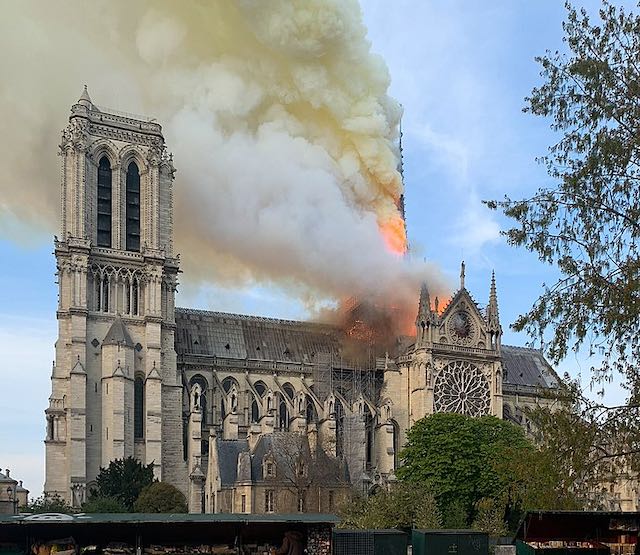
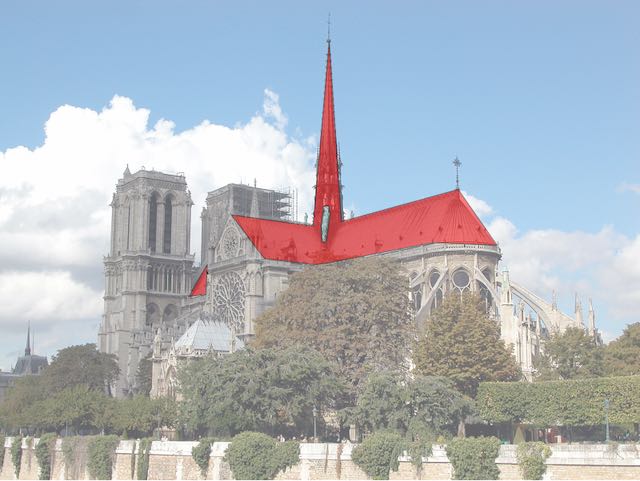
What ever caused the fire, it significantly damaged the Cathedral. The picture on the right highlights how much of the roof was destroyed.
We, along with all those we were in contact with, found it hard to believe that this centuries old Cathedral could be in ruins or damaged beyond repair. In May, heading towards Giverny and Monet’s Garden we did have a moment to stand and look at the Cathedral with the protective fencing around it and the gaping hole in the roof.
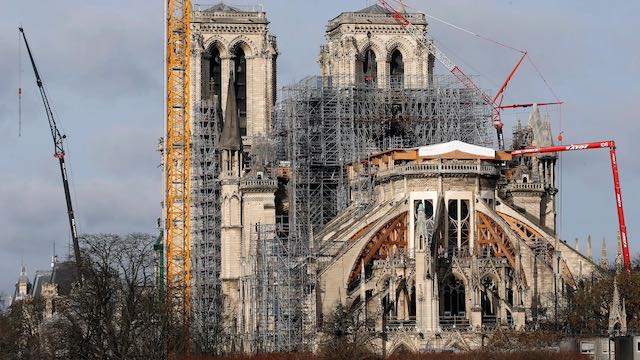
The main structure was intact; firefighters had saved the façade, towers, walls, buttresses, and stained-glass windows. The stone vaulting that forms the ceiling of the cathedral had several holes but was otherwise intact. The Great Organ, which has over 8,000 pipes and was built by François Thierry in the 18th century was also saved but damaged by water. Because of the renovation, that had been underway, the copper statues on the spire had been removed before the fire. About 500 firefighters helped to battle the fire, President Emmanuel Macron said.
Notre-Dame de Paris is a medieval Catholic cathedral on the Île de la Cité (an island in the River Seine), and has been a major part of the City since it was consecrated in the late 1100’s. It has been considered one of the finest examples of French Gothic architecture. Several attributes set it apart from the earlierRomanesque style, including its pioneering use of the rib vault and flying buttress, its enormous and colorfulrose windows, and the naturalism and abundance of its sculptural decoration. Notre-Dame is also exceptional for its three pipe organs (one historic) and its immense church bells.
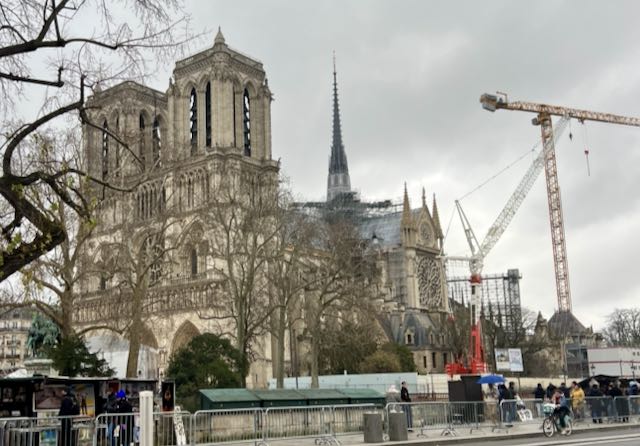
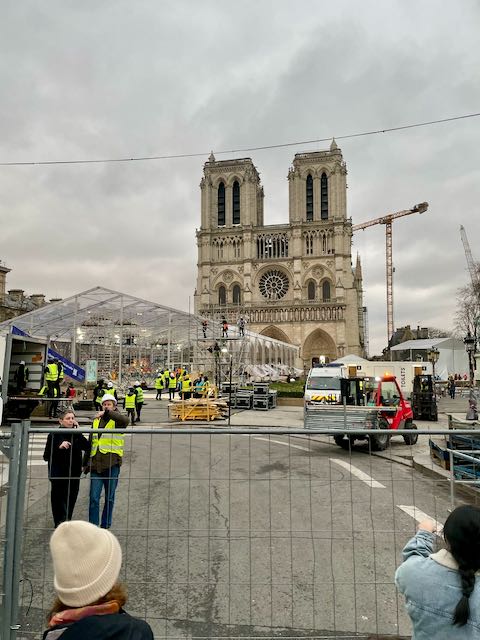
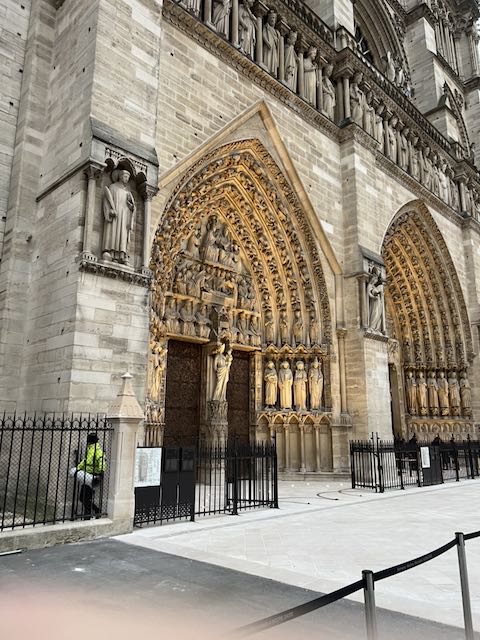
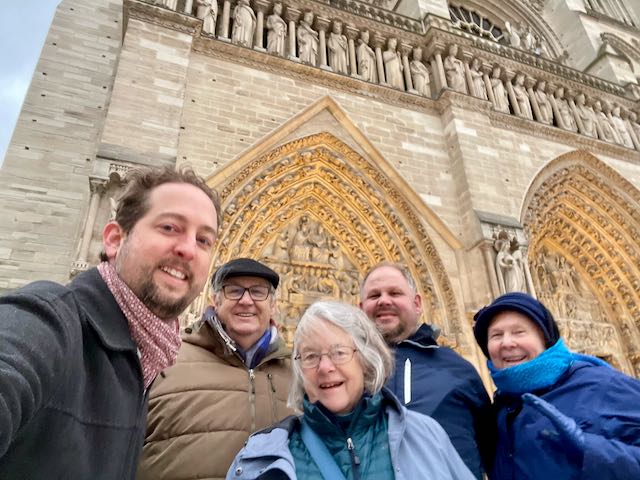
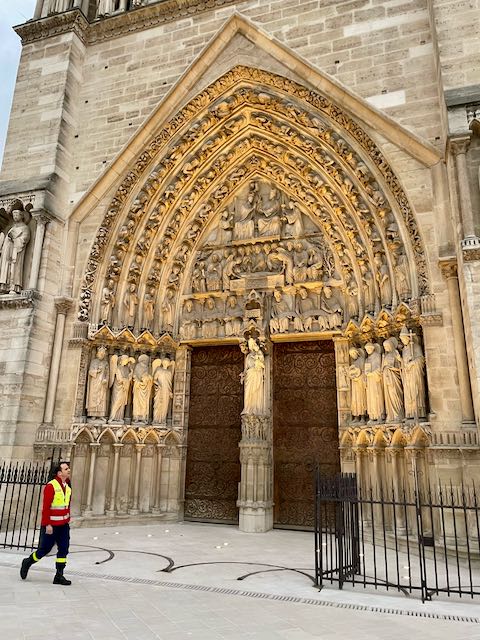
General Jean-Louis Georgelin, a French army officer, was chosen to head the restoration. He ran the restoration with military precision – keeping the focus on the work and not allowing outside pressures (The Press was very difficult) to gum up the works.
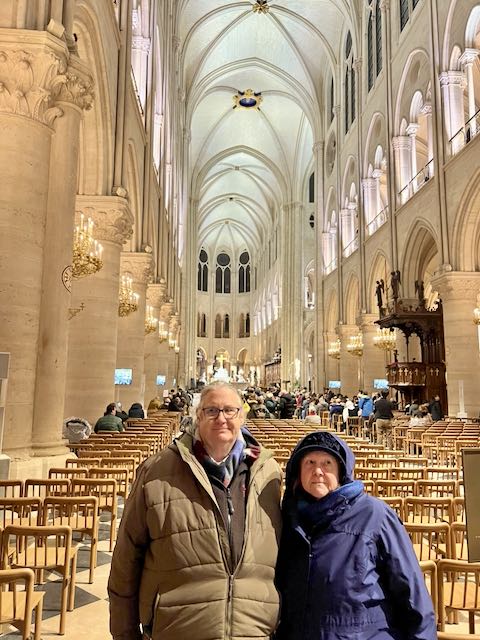
The official reopening on December 7 drew unprecedented international attention, with President Emmanuel Macron hosting presidents from 40 nations to celebrate this historic milestone. This extraordinary diplomatic assembly demonstrated the cathedral’s significance not just as a French monument, but as a symbol of global cultural heritage and international cooperation.
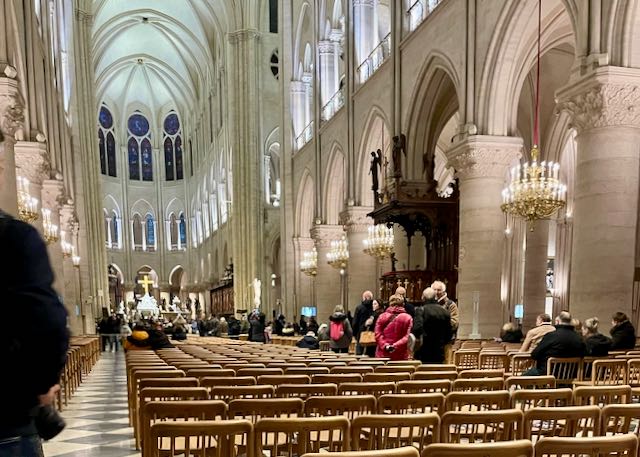
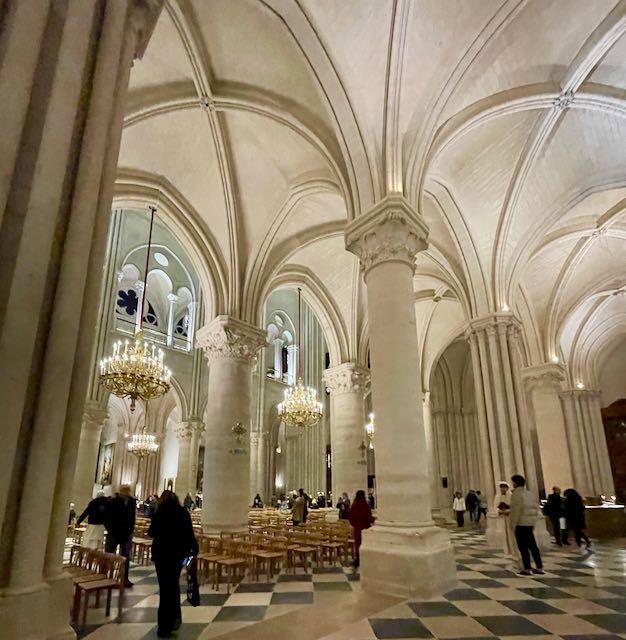
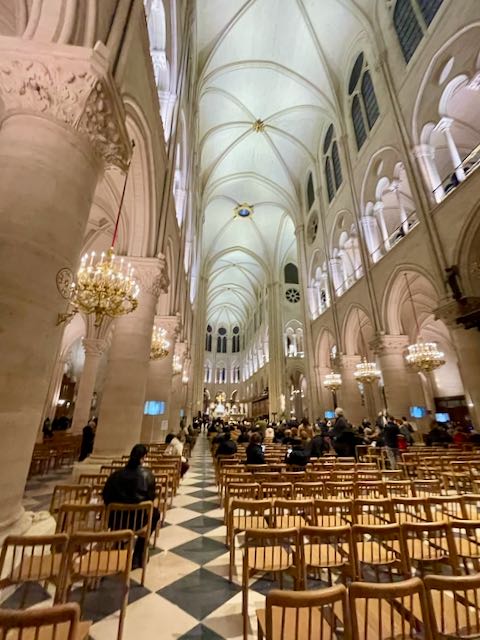
December 8 marked a profound spiritual milestone as archbishops, from across France and beyond, gathered for the first Mass in the restored cathedral. On December 9, 2024, the Cathedral reopened to the public and we were some of the very lucky ones to have entrance to the Cathedral that day. We arrived at our appointed time of 3:45, and after waiting in line for a bit, were allowed into the Cathedral.
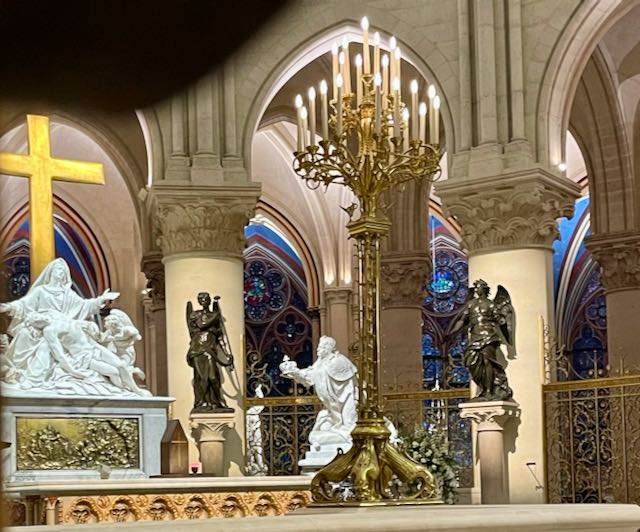
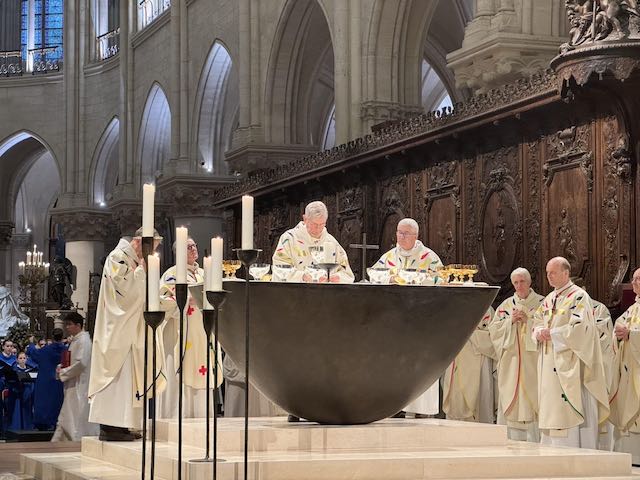
The statuary, particularly the Pieta, behind the Alter has been marvelously cleaned – and a new contemporary alter installed.
First impression? Light – light everywhere. The interior of the place had been dramatically cleaned. Remember, the place had not had a ‘bath’ for centuries and the candle smoke and other contaminates had darkened the interior dramatically.
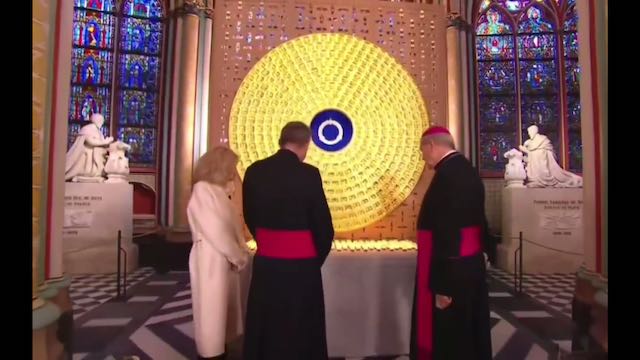
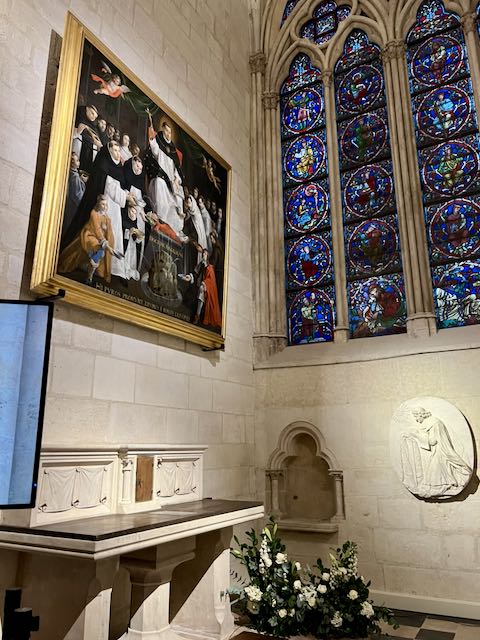
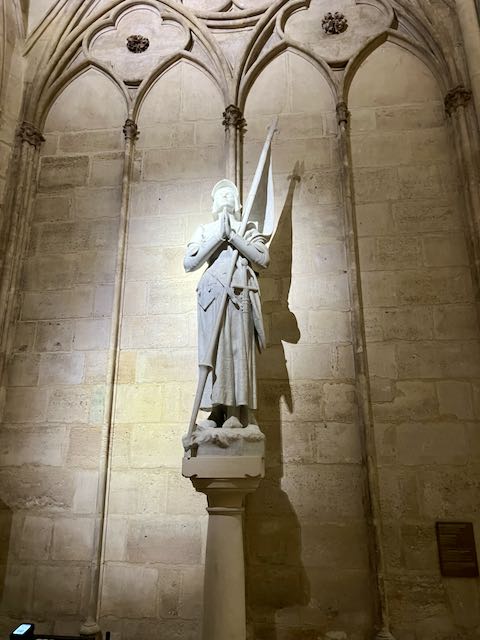
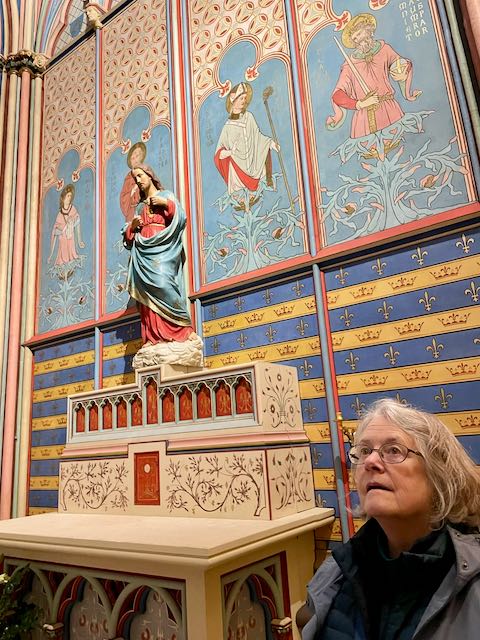
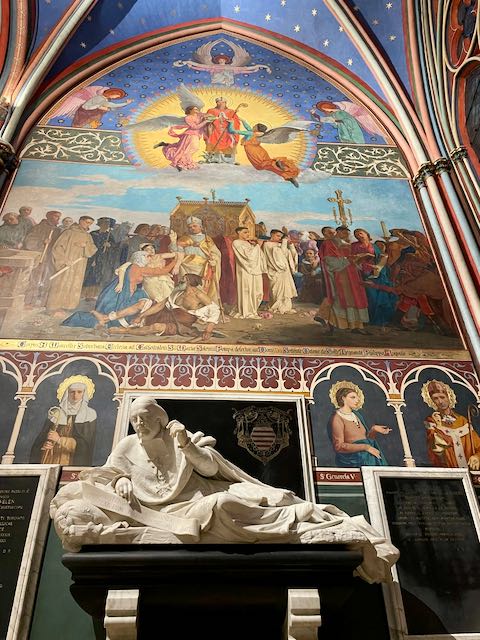
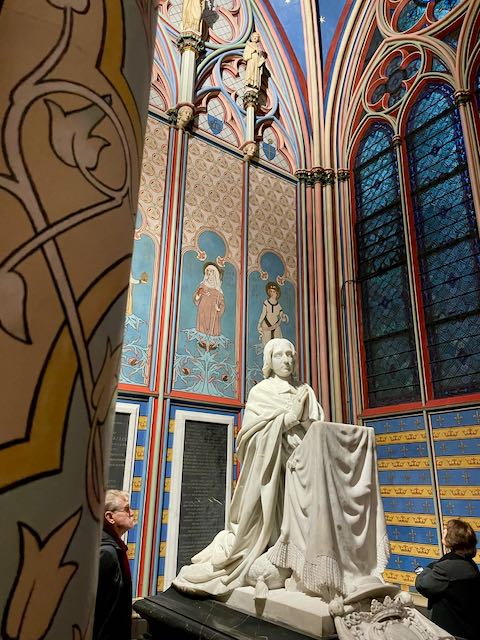
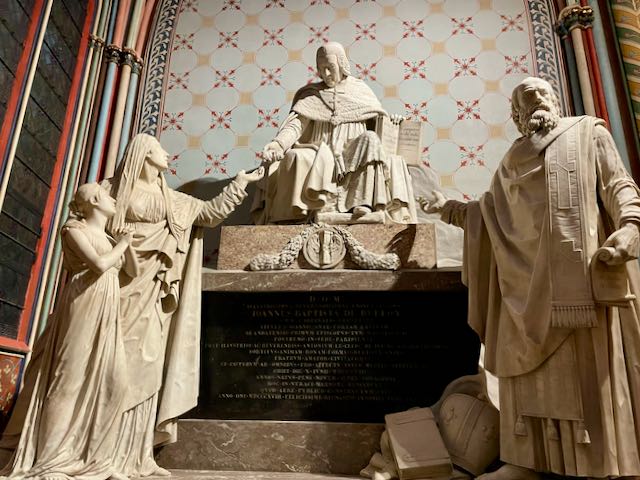
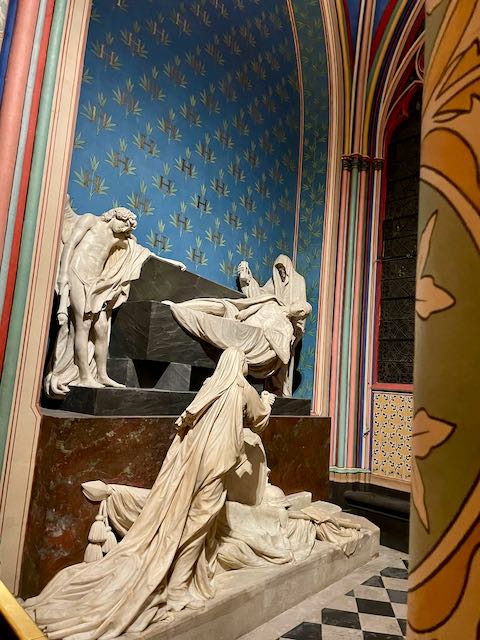
I am sorry I didn’t get all the names for the various chapels – they had all been throughly cleaned and were looking fantastic.
“The color of the restored interior will be “a shock” to some returning visitors, observed General Jean-Louis Georgelin, the French army officer heading the restoration.” The interior elevations regained their original color, since the chapels and side aisles were very dirty. Of course, it is not a white color. The stone has a blonde color, and the architects are very attentive to obtaining a patina which respects the centuries. Although General Georgelin did not live to see the opening, he saw the dramatic results of his working groups effort.
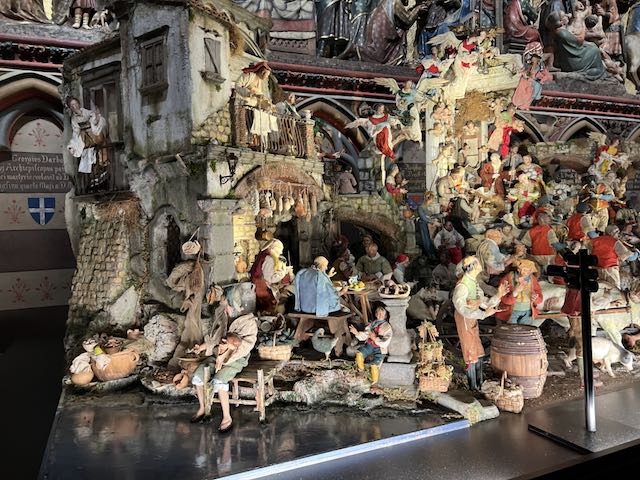
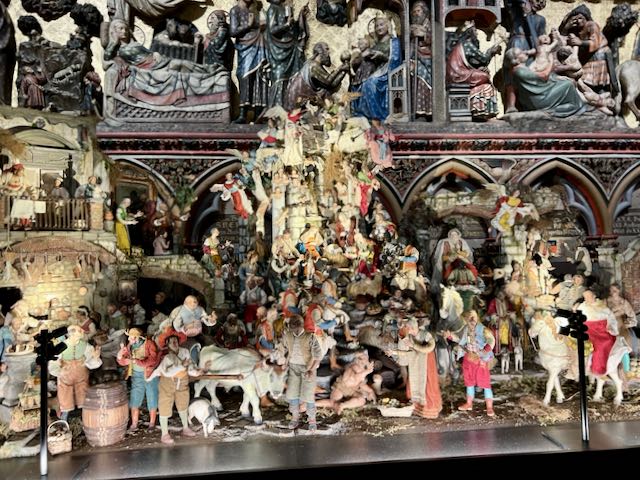
For the festive season, an exceptional Neapolitan nativity scene takes up residence in Notre-Dame de Paris. An 18th-century masterpiece, it unveils 150 santons showcasing Italian craftsmanship and Christmas traditions.
There are two PBS Nova presentations that are quite interesting to watch:
We also experienced the power of the restored organ as we stayed for vespers.
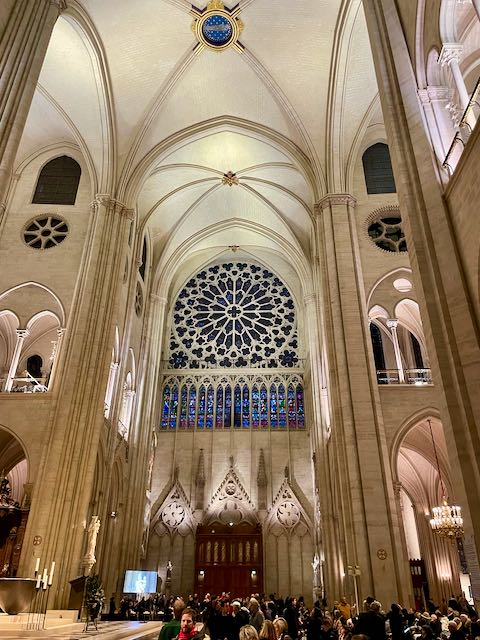
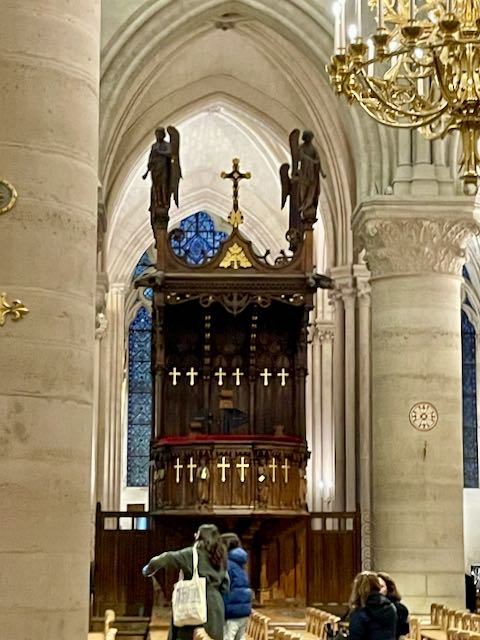
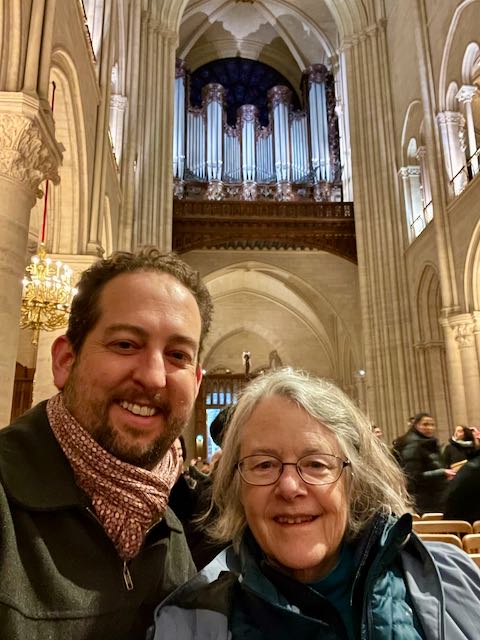
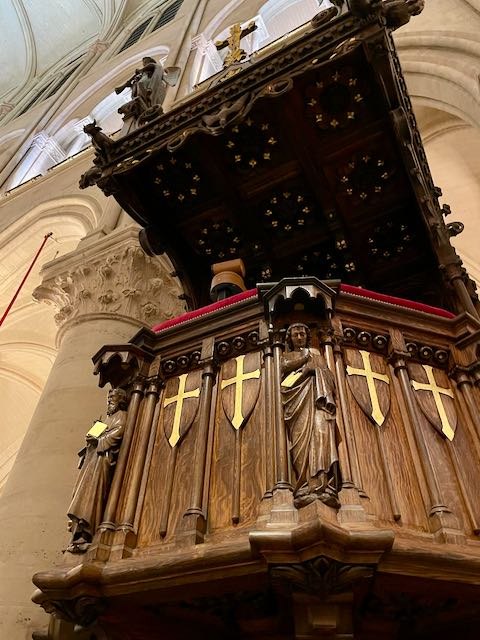
For anyone who has ever visited Notre-Dame de Paris, I encourage you to return and see how wonderful it now looks.
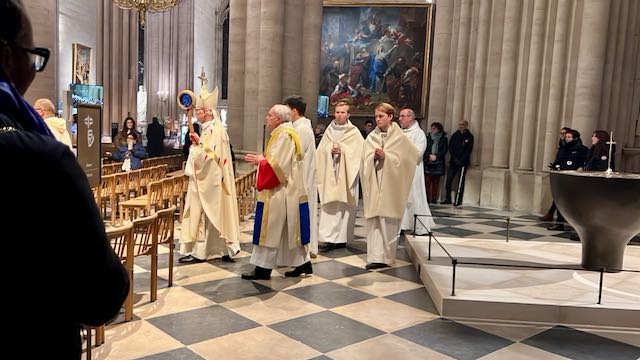
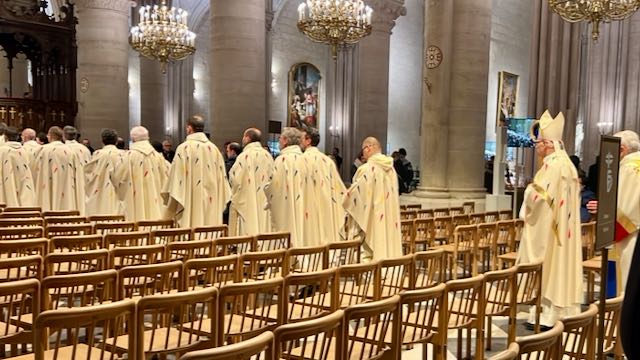
We were able to stay inside and walk around as long as we liked. During our visit, a Vespers Service was held and as we were leaving a full Mass was getting started. We were so pleased to have had the opportunity to see the Cathedral.
.
